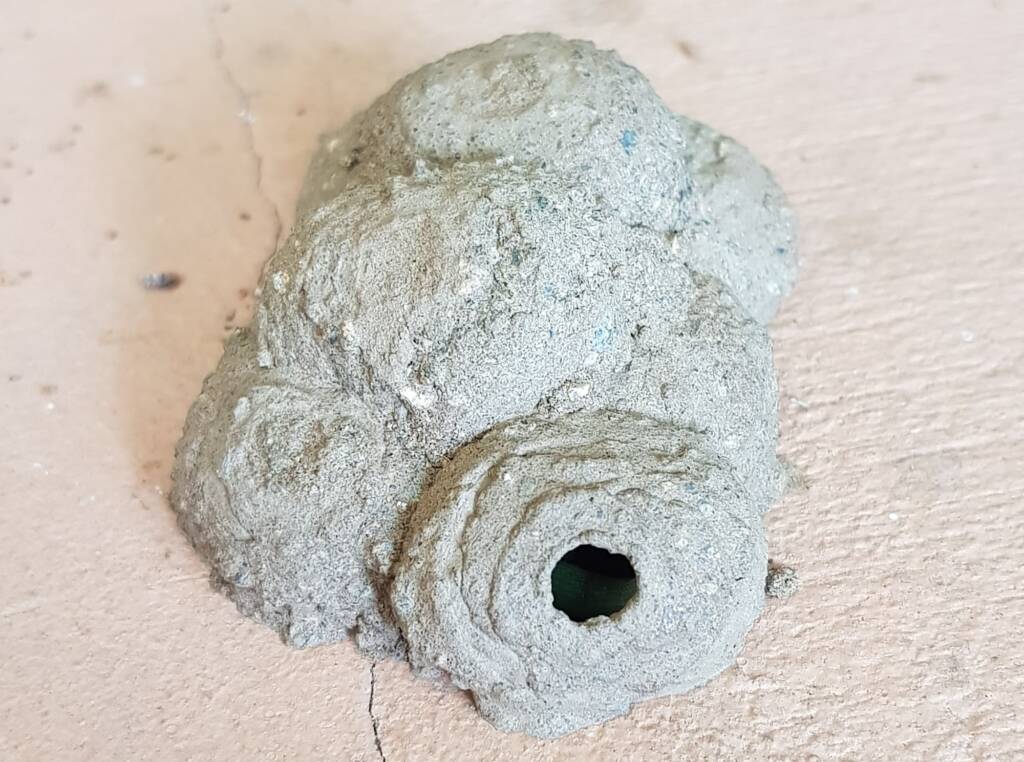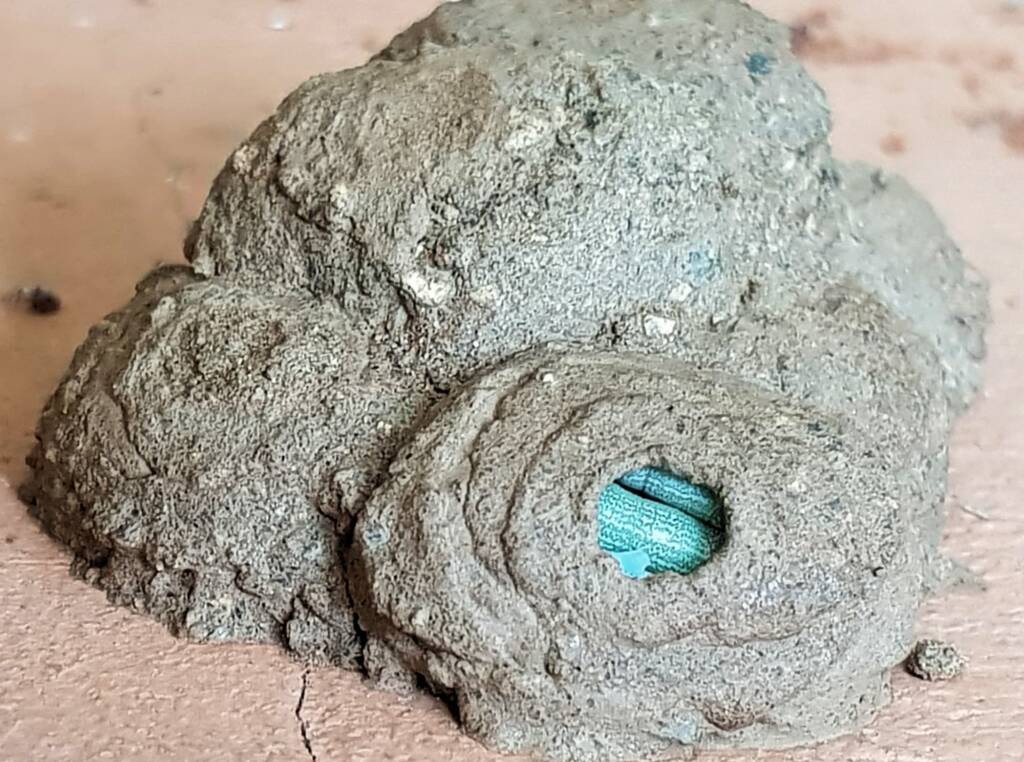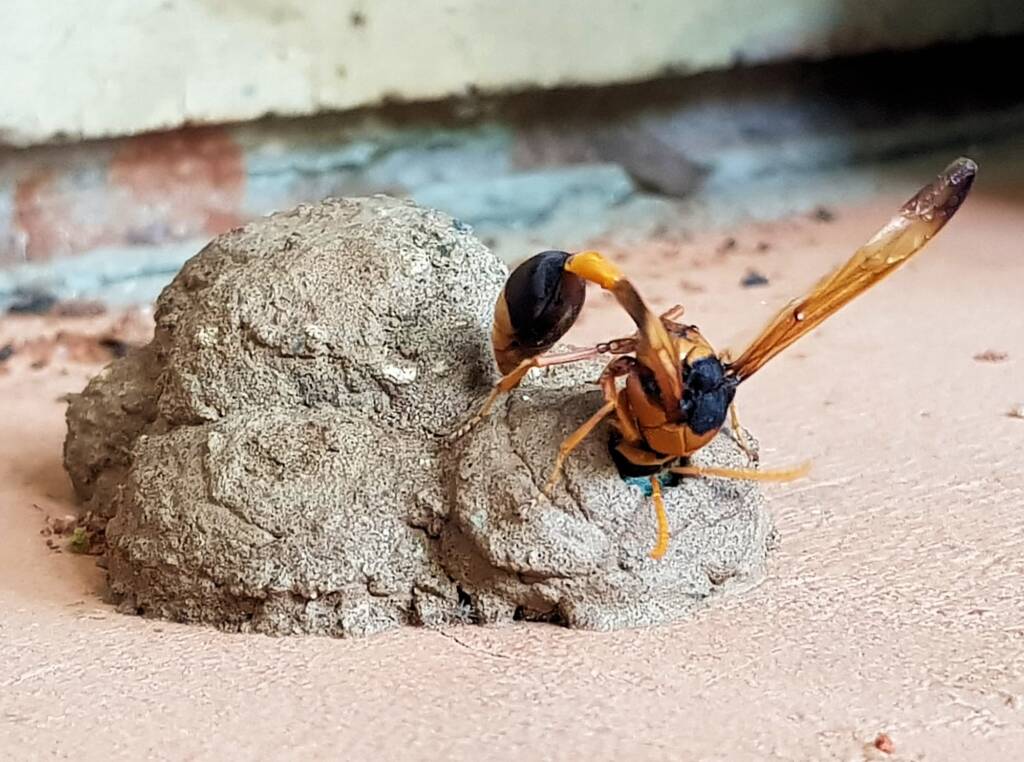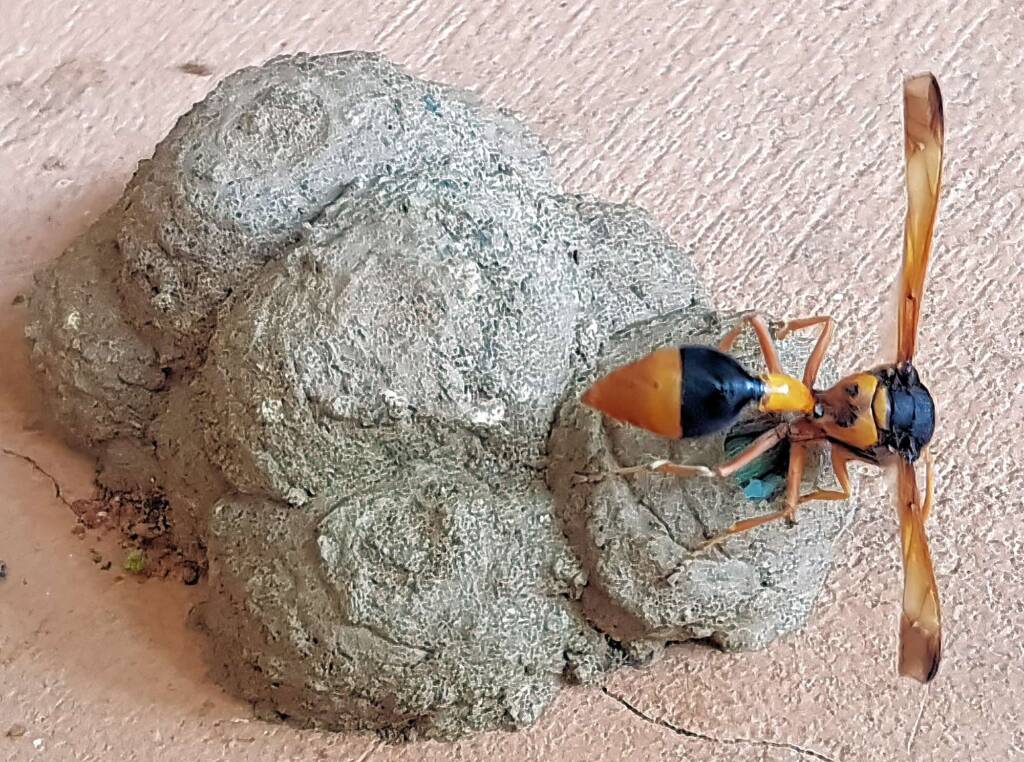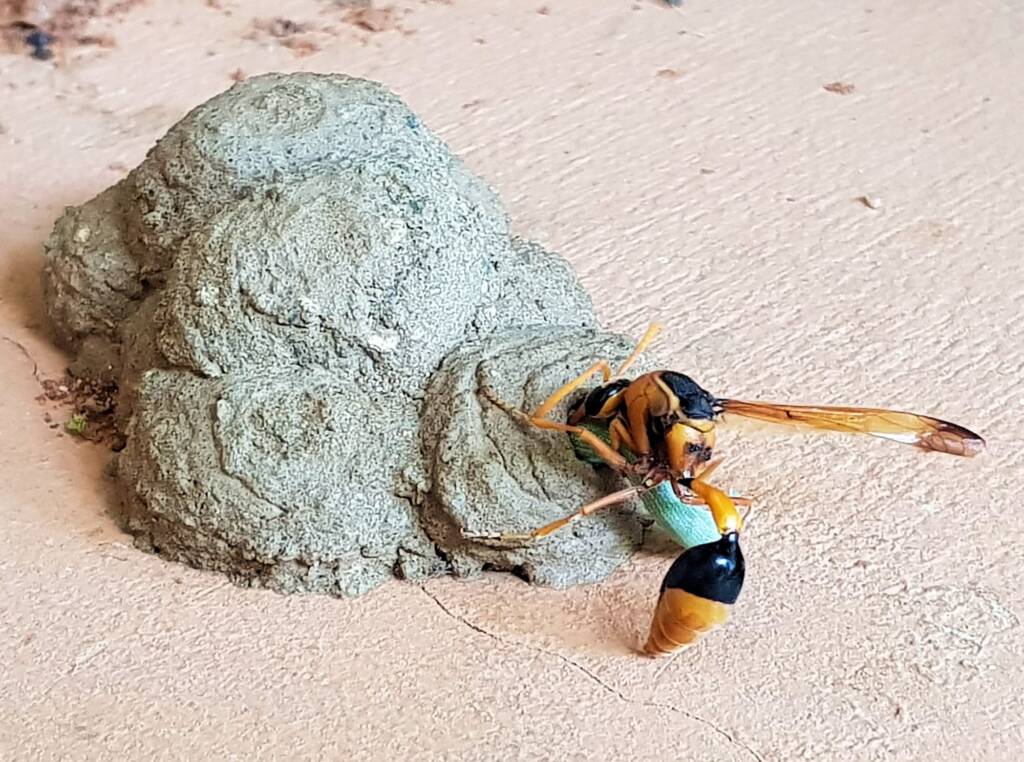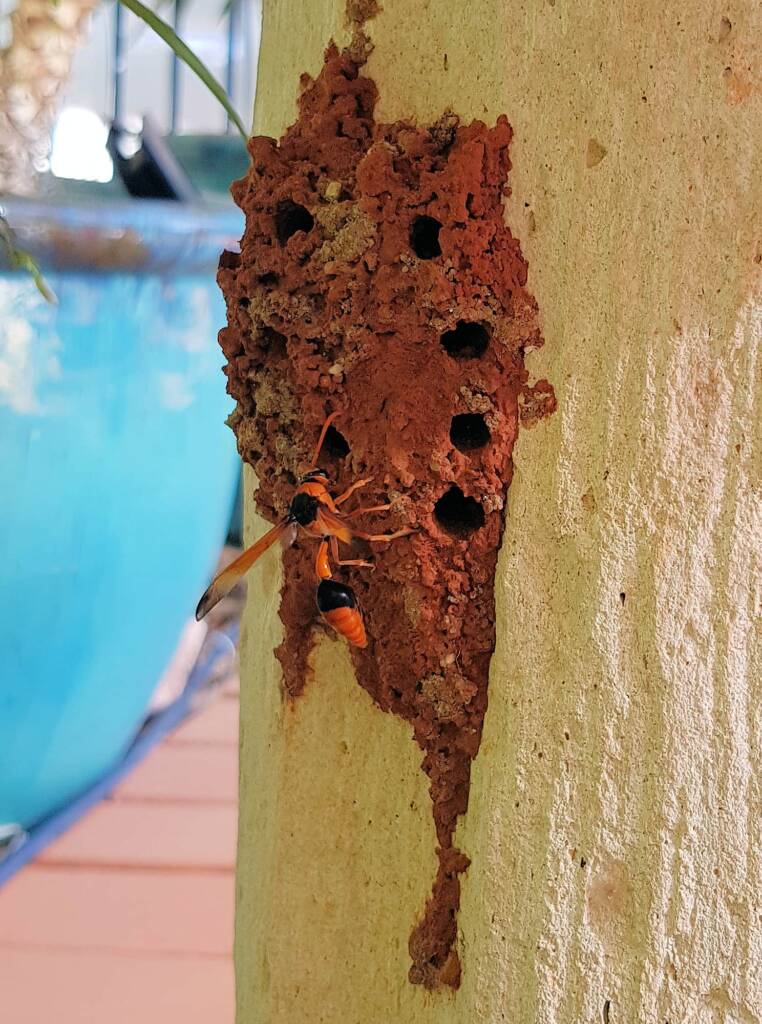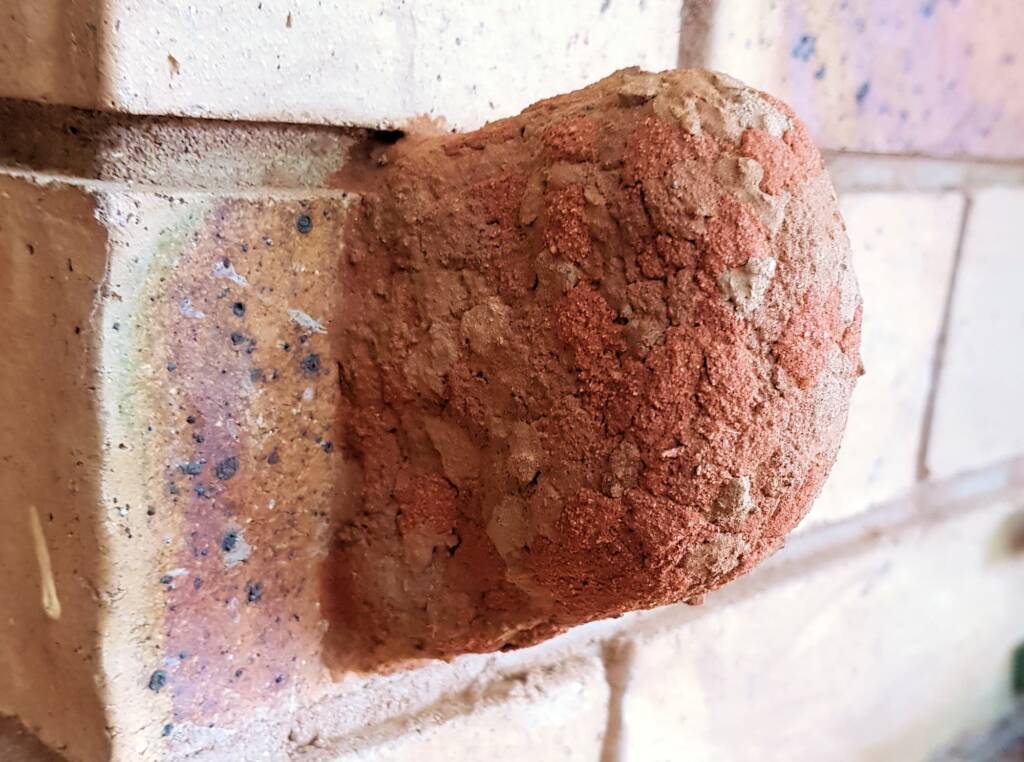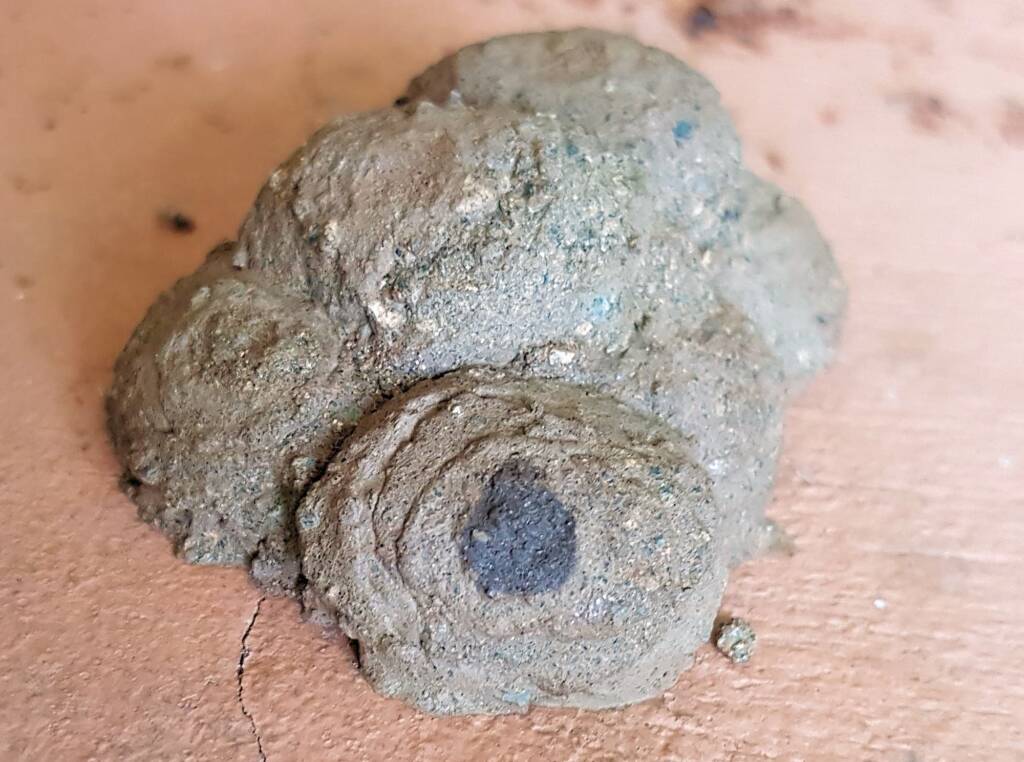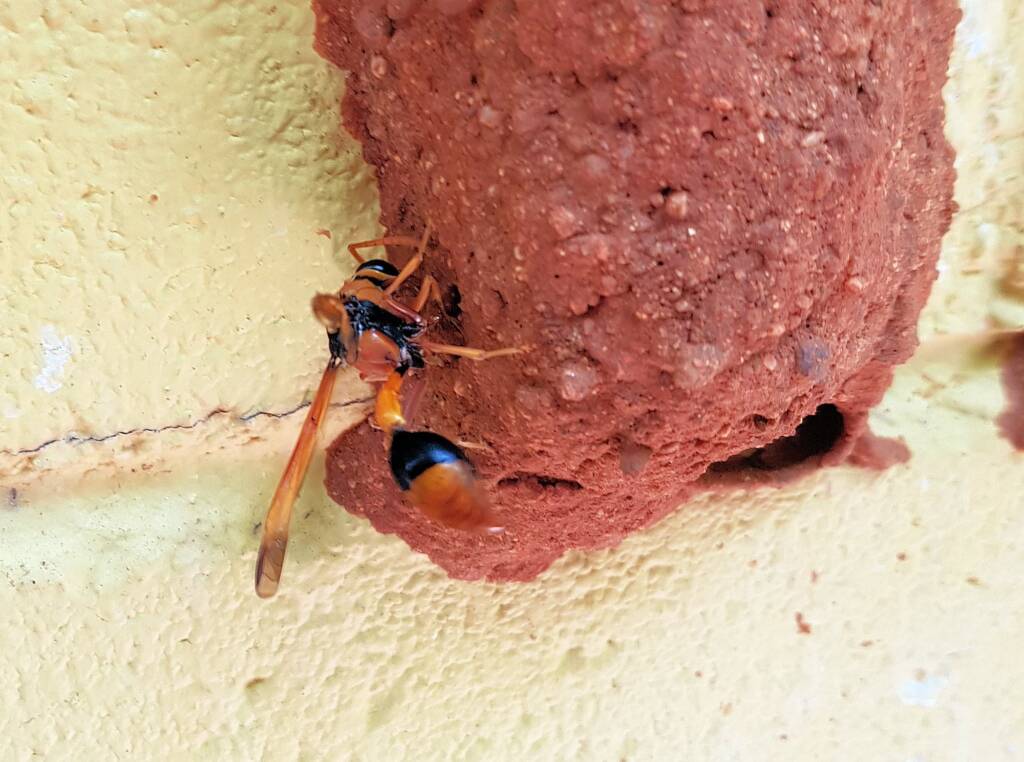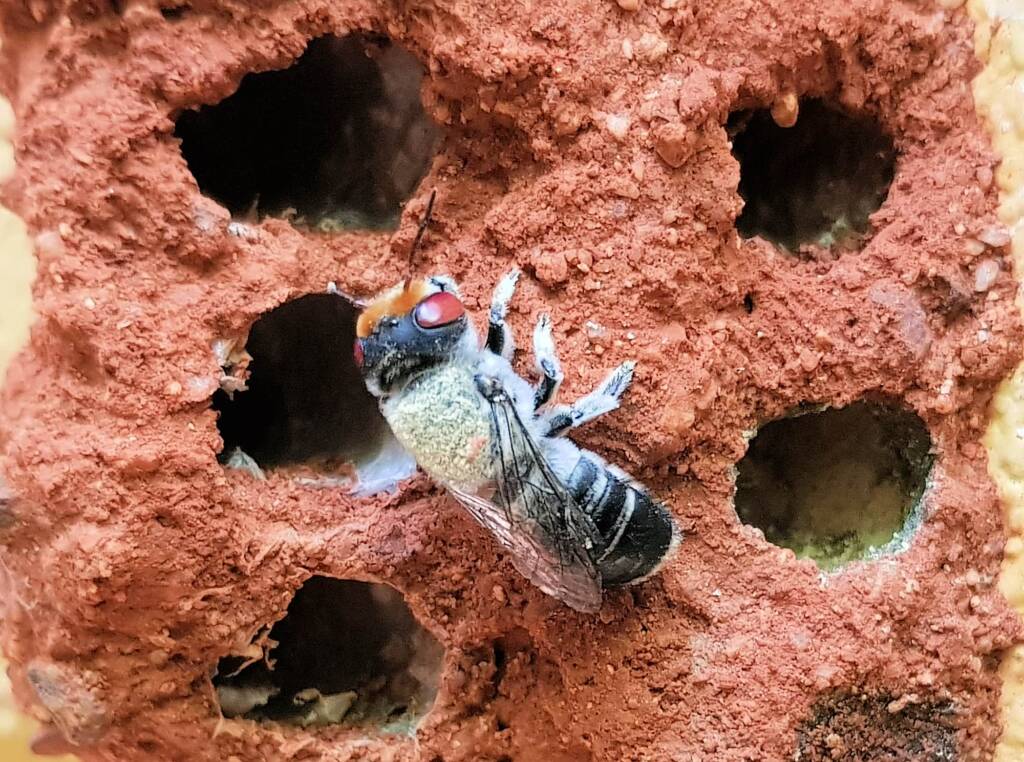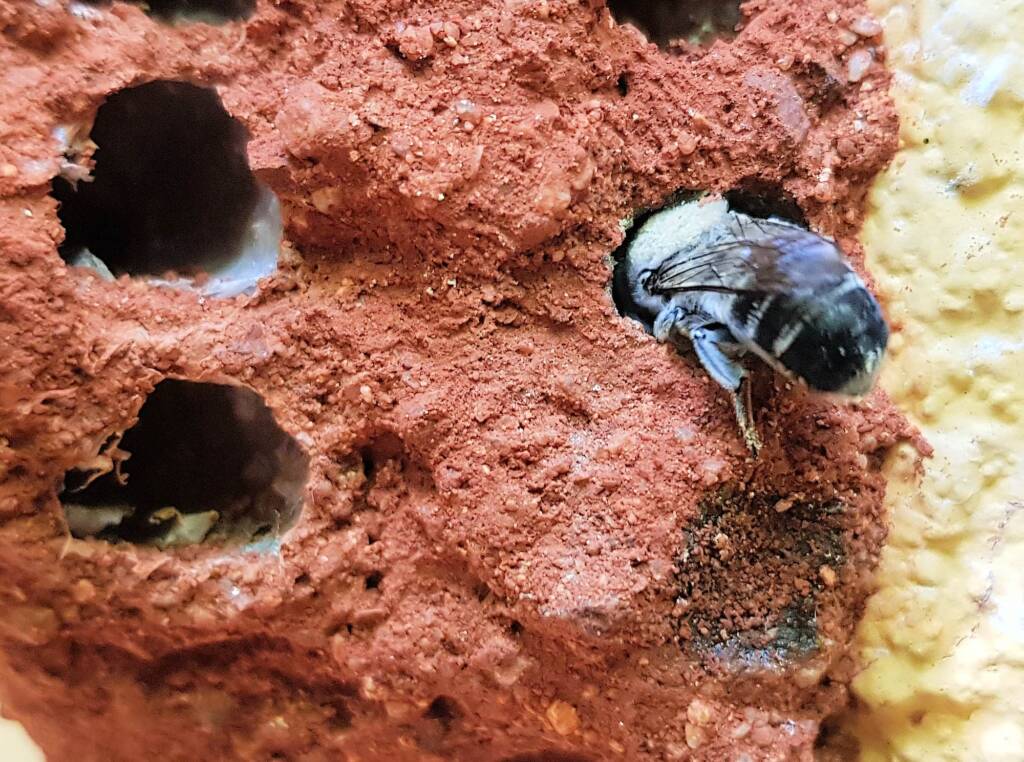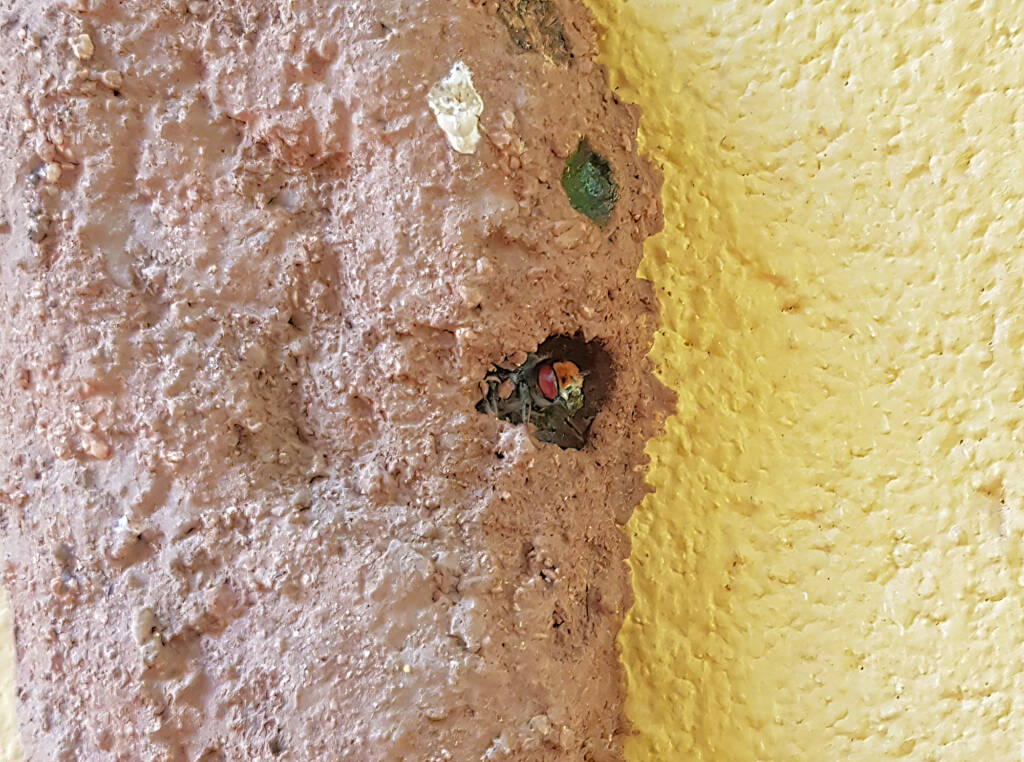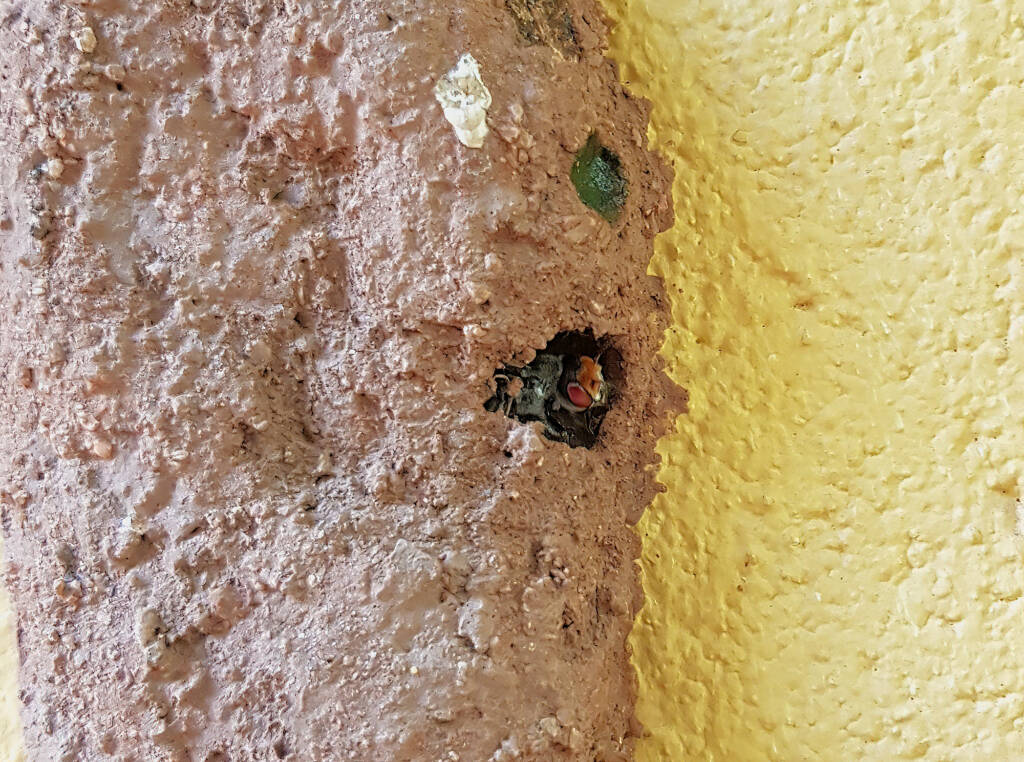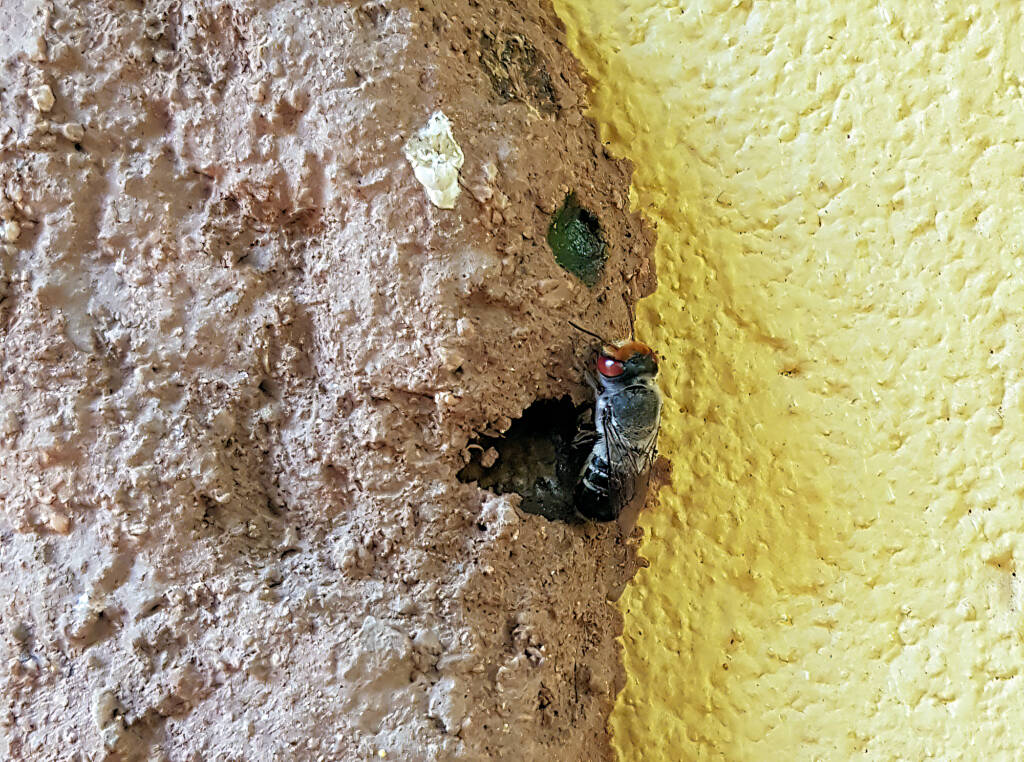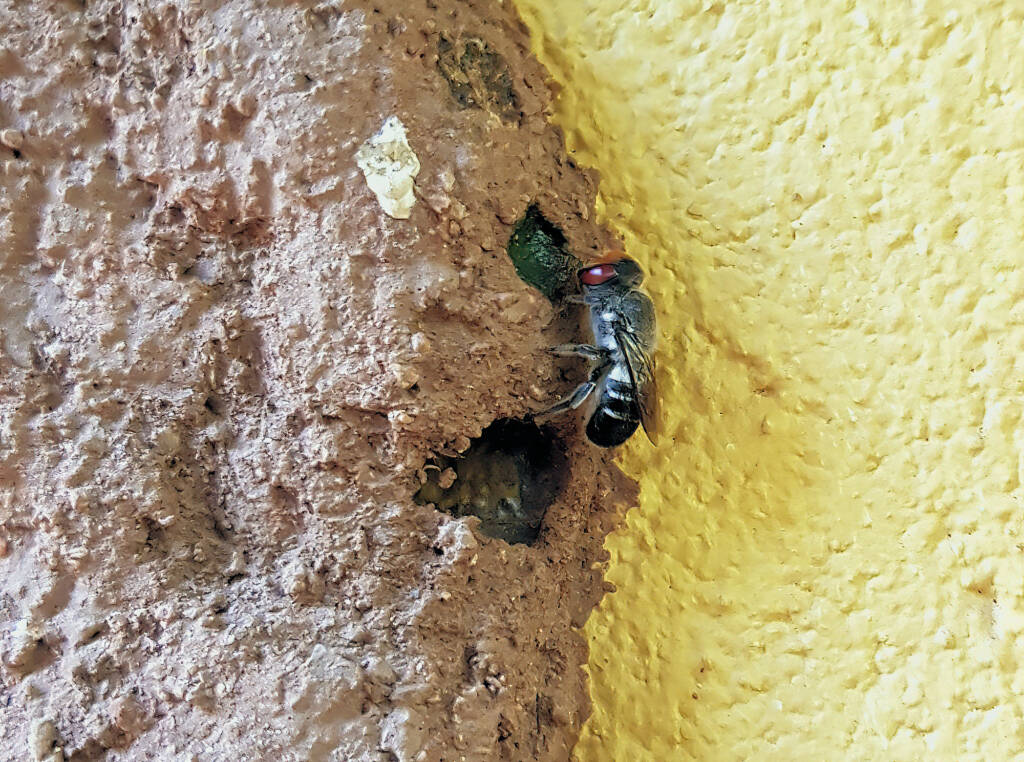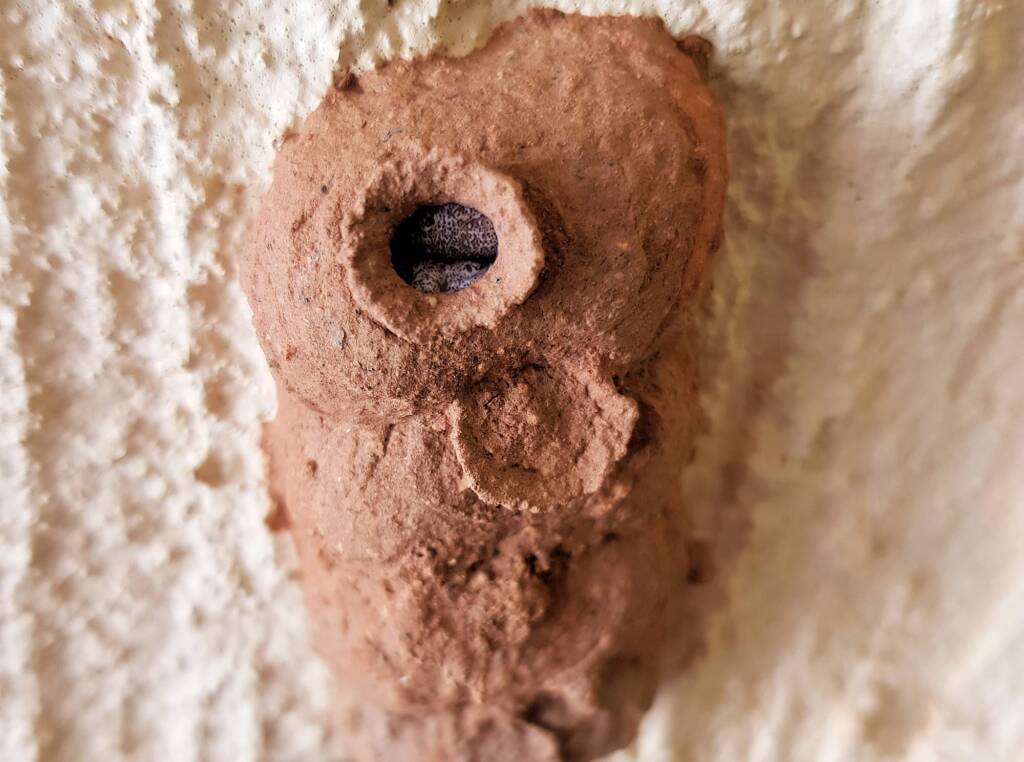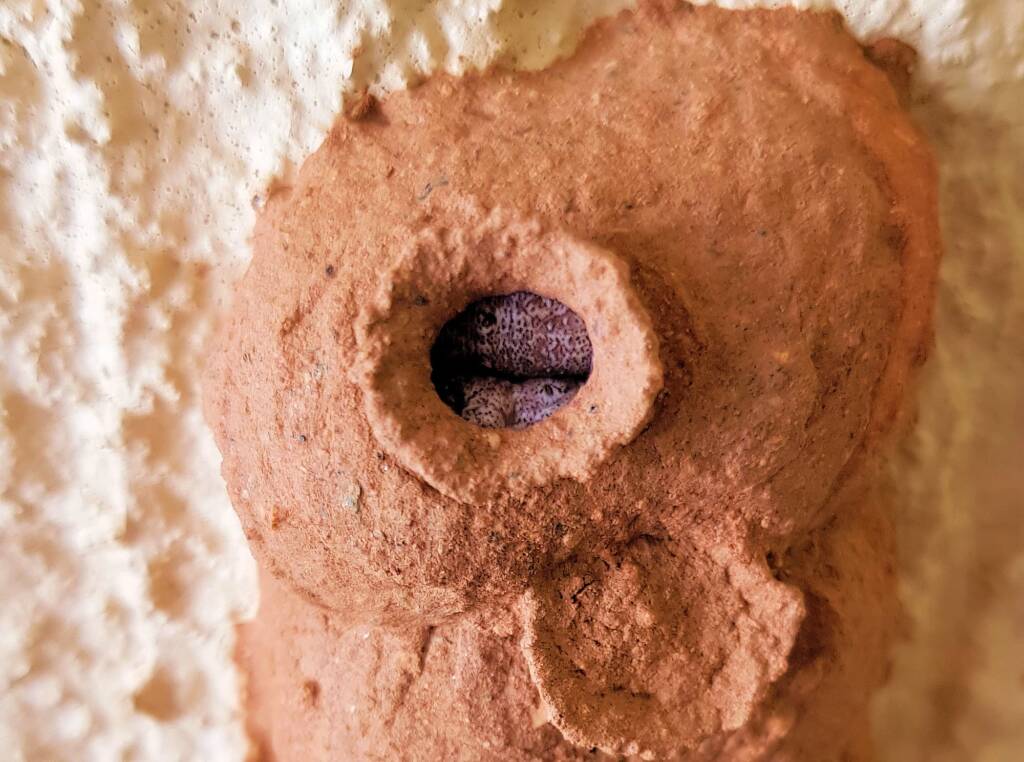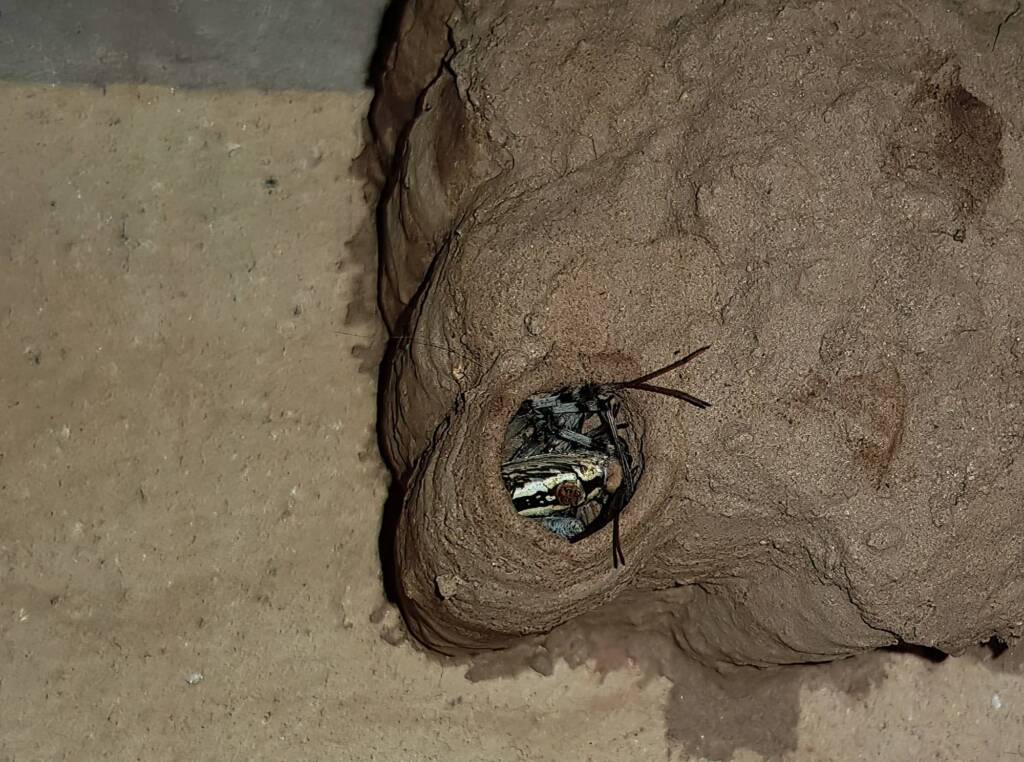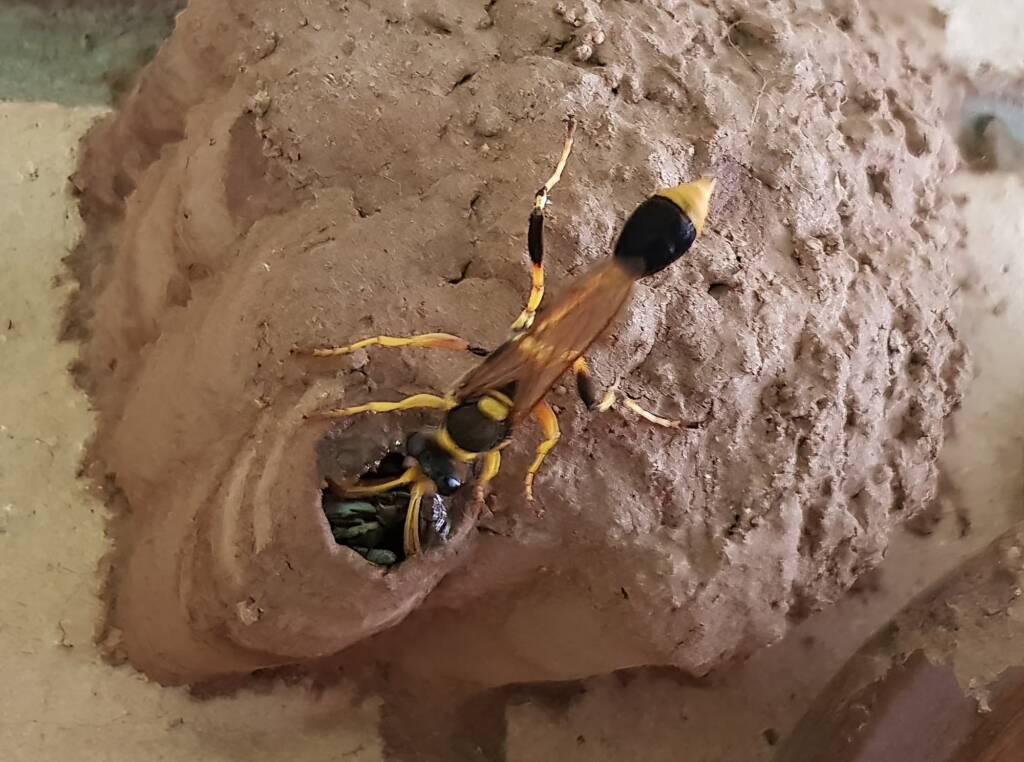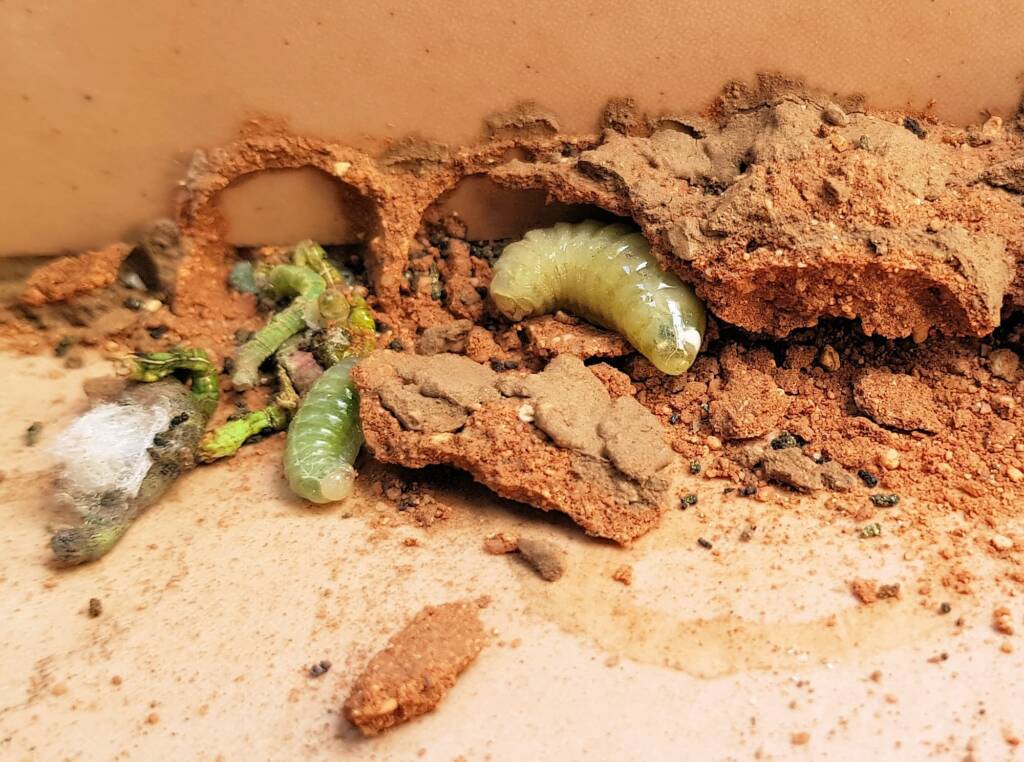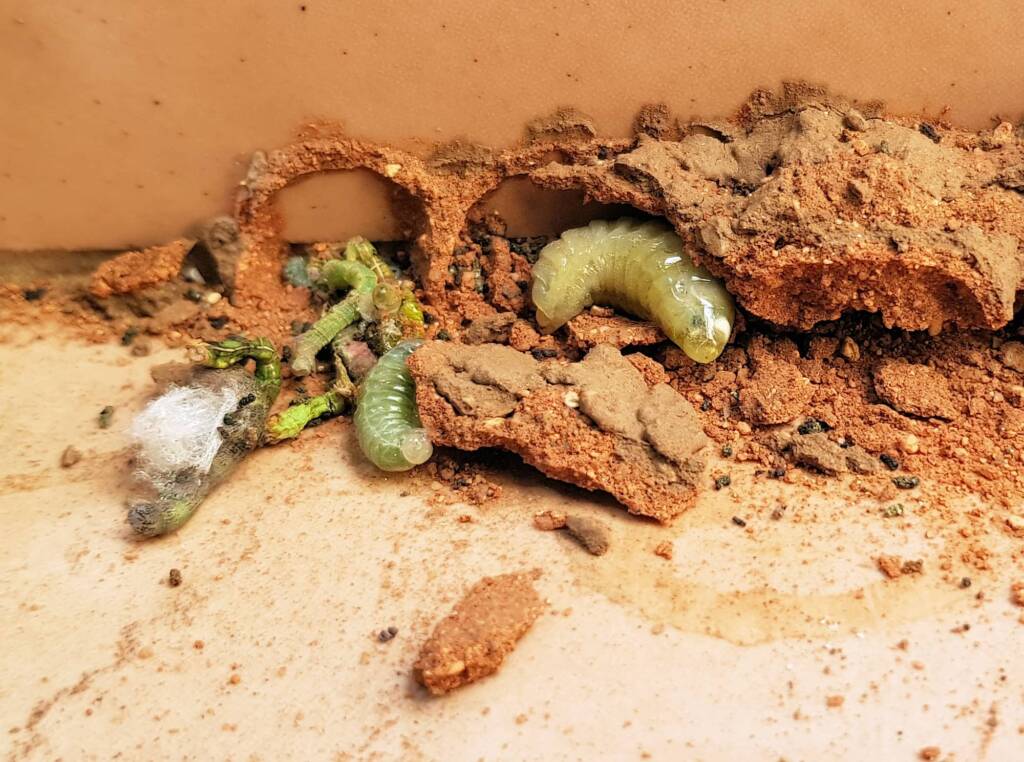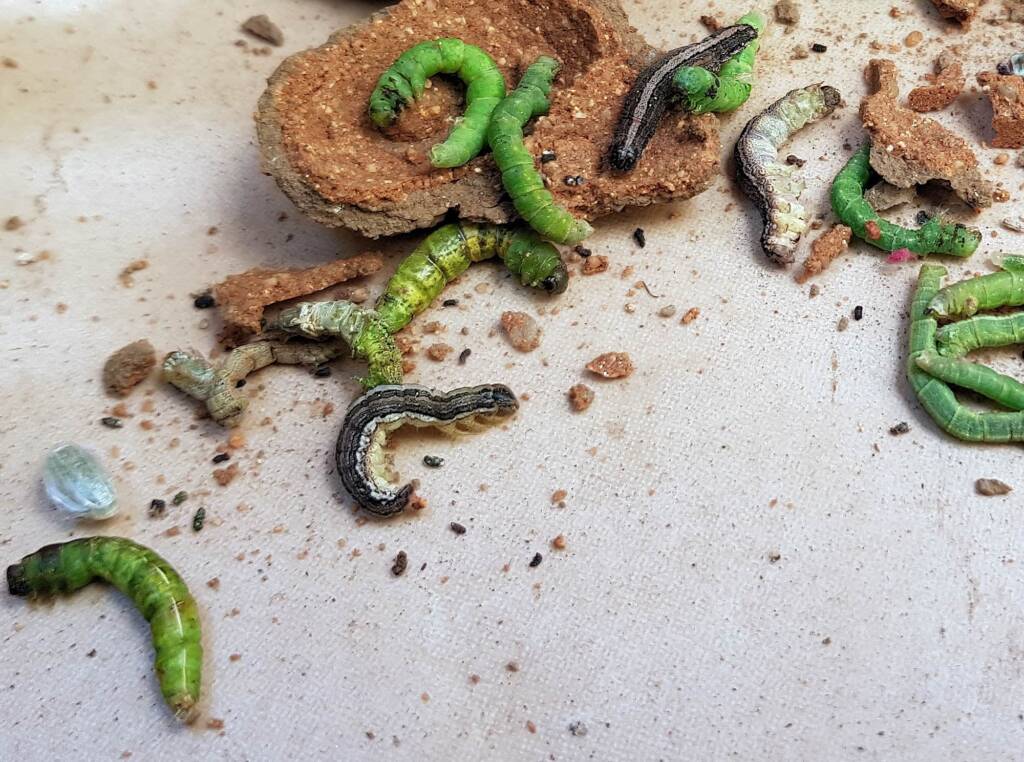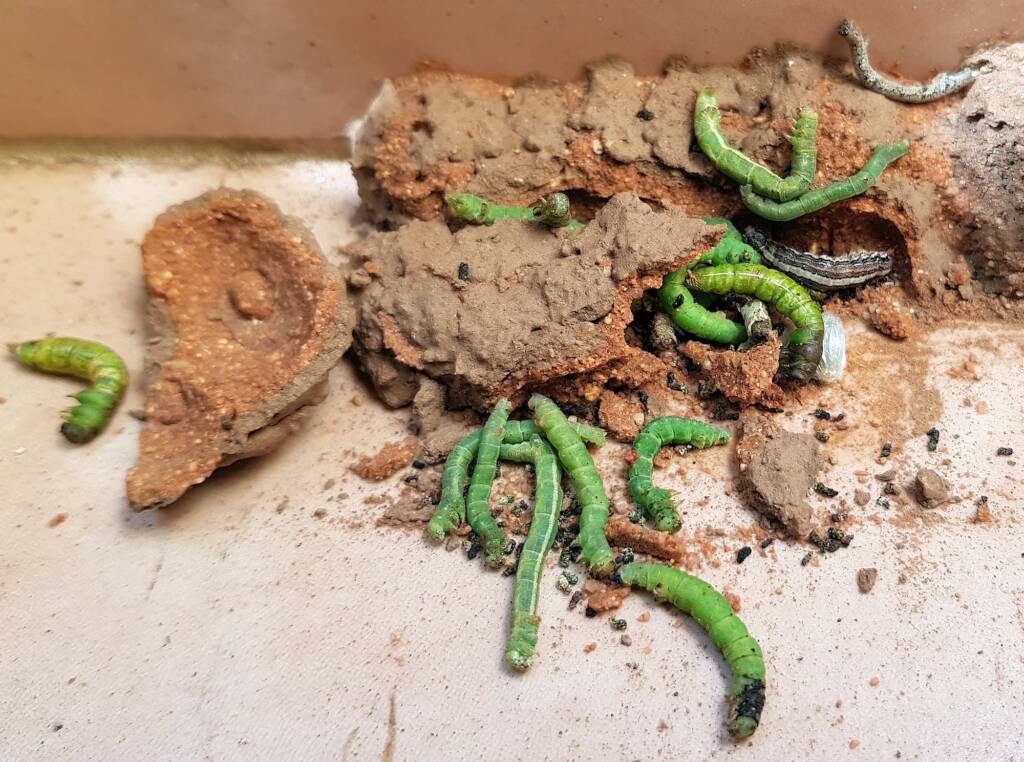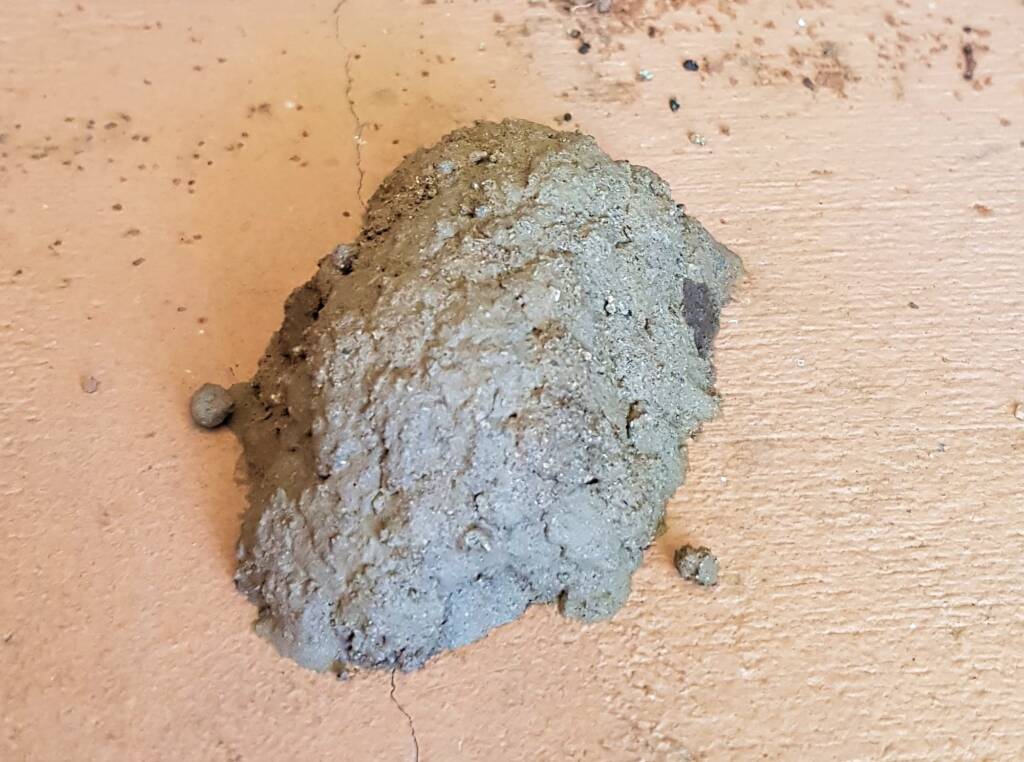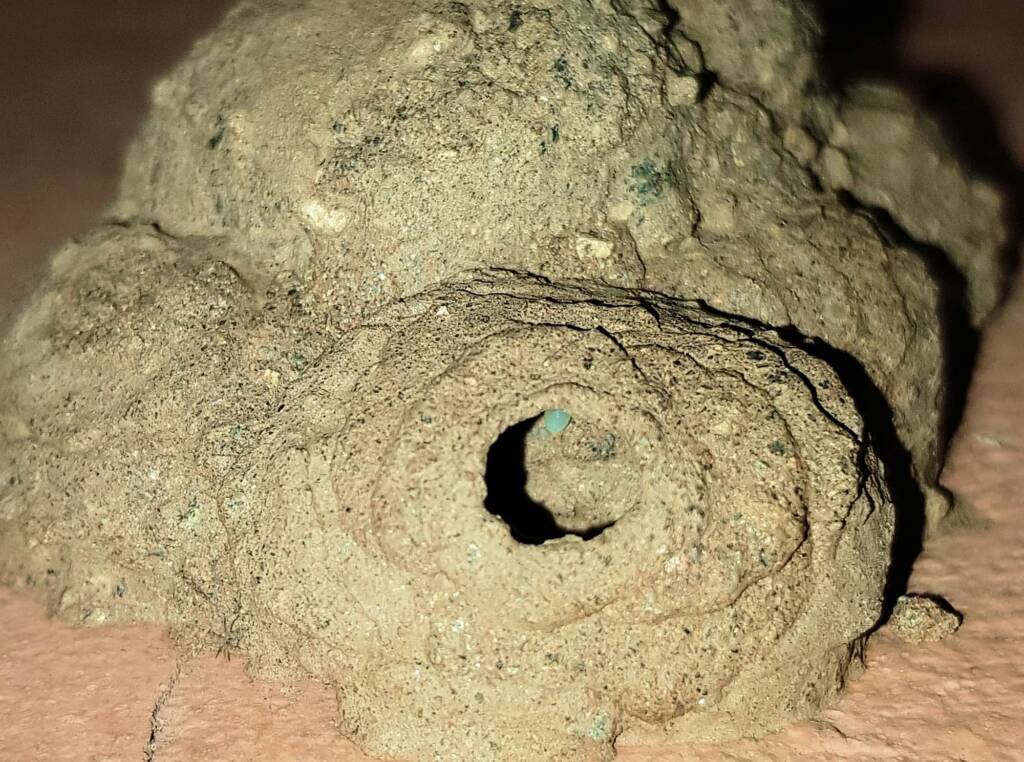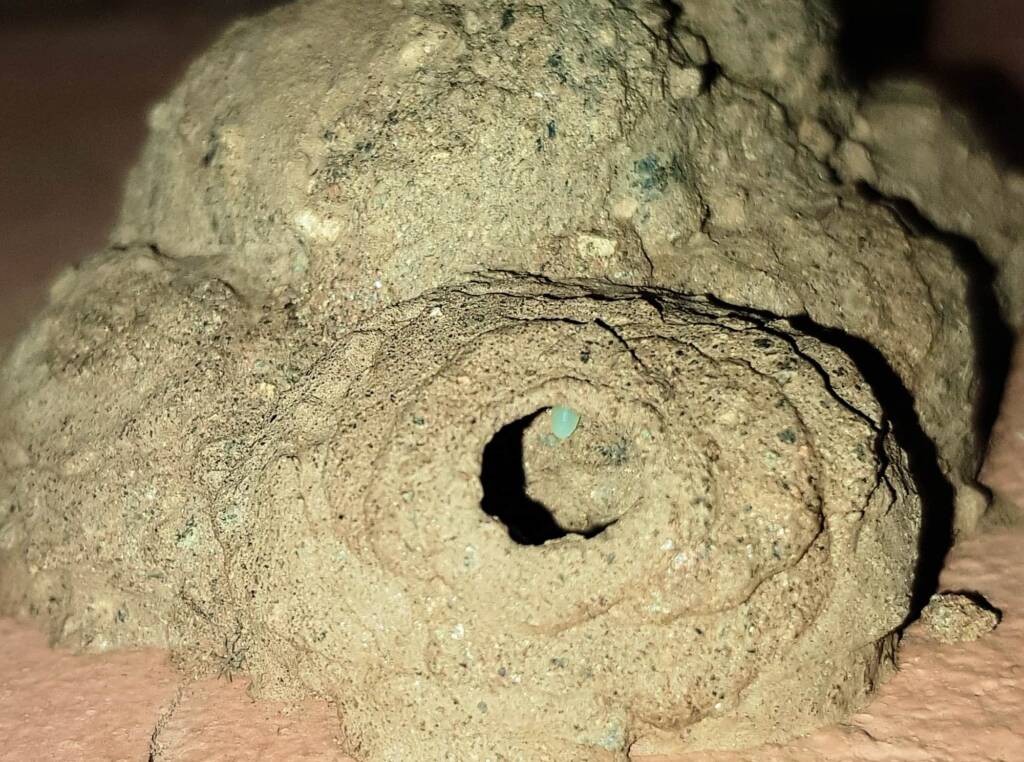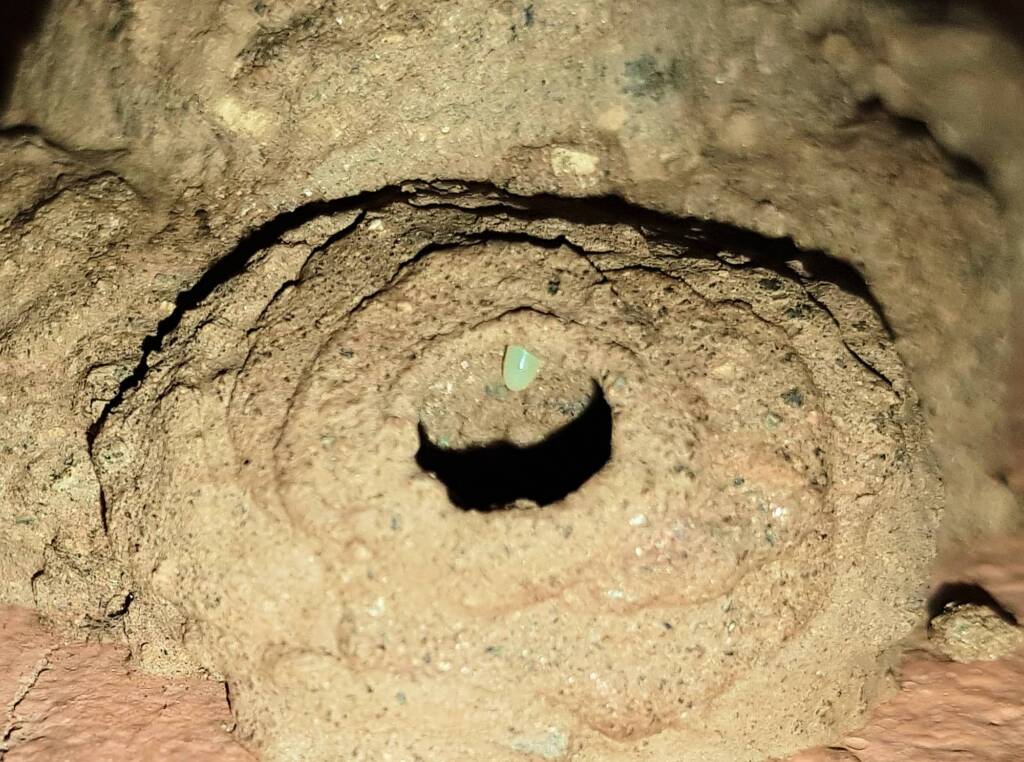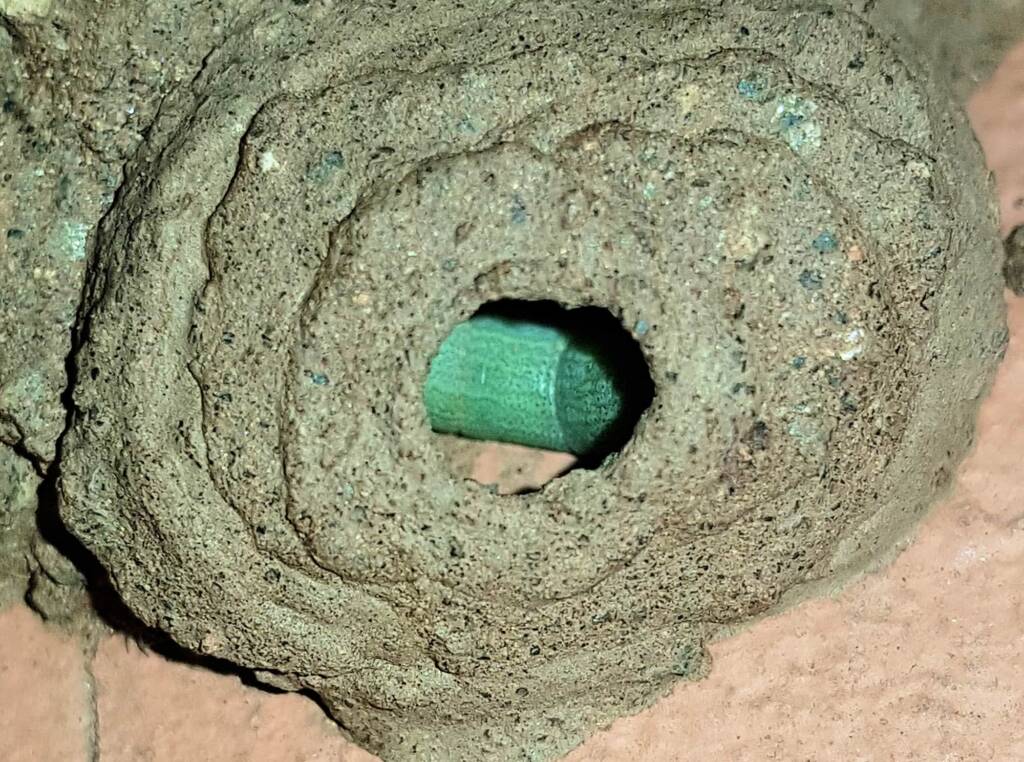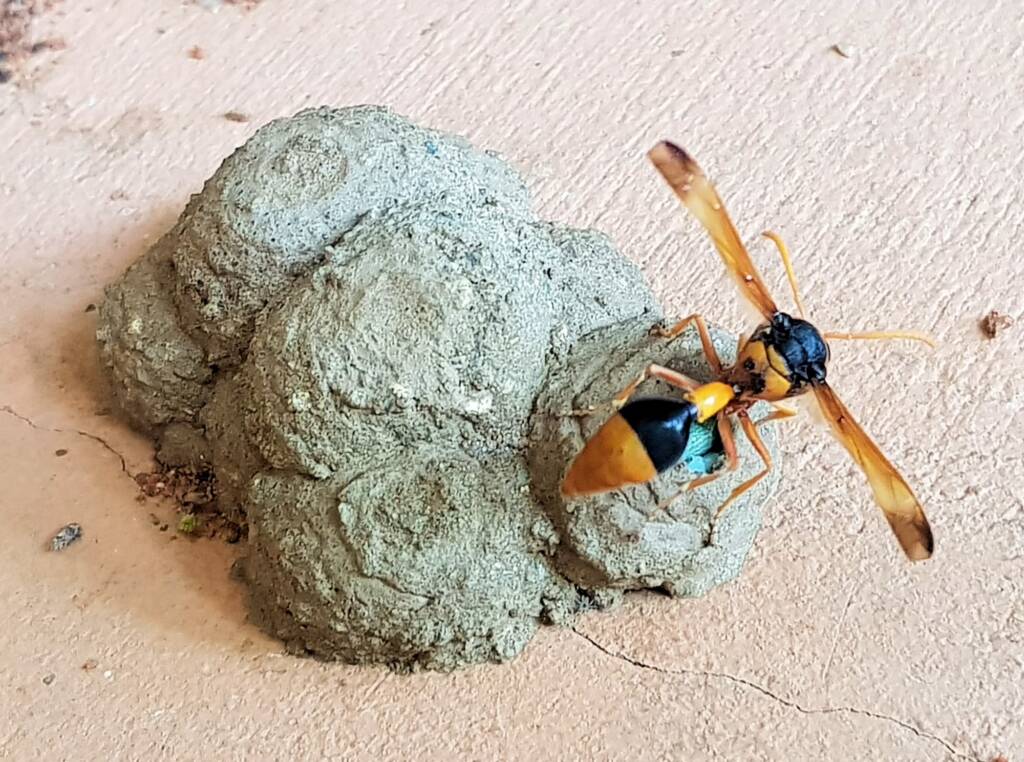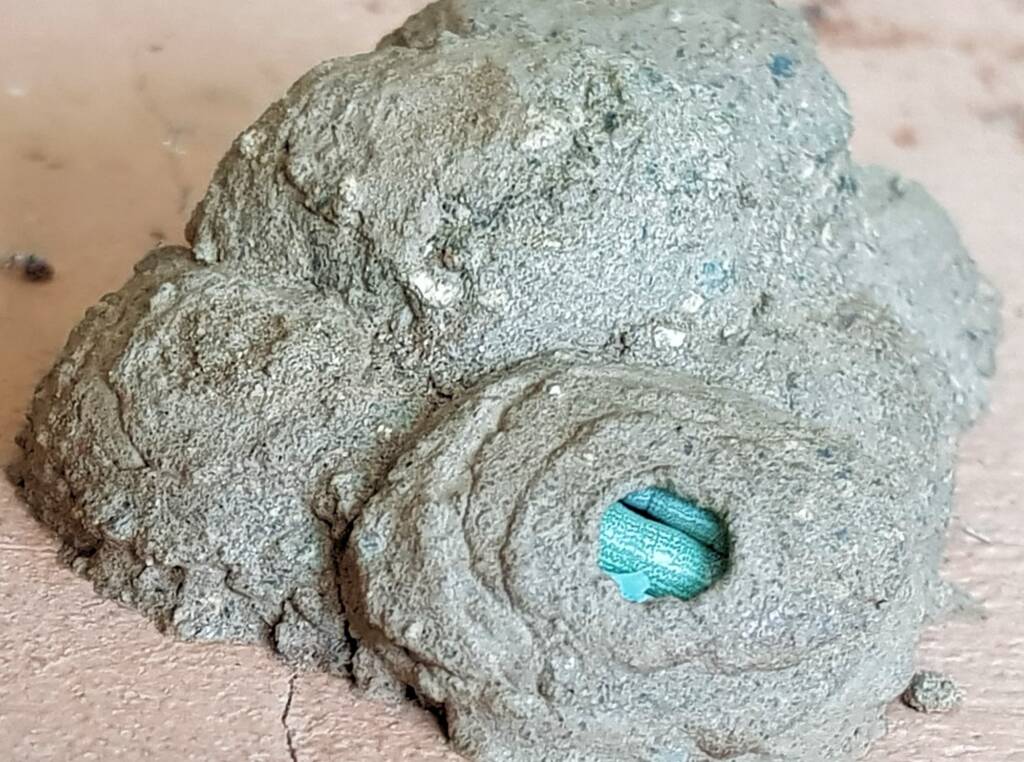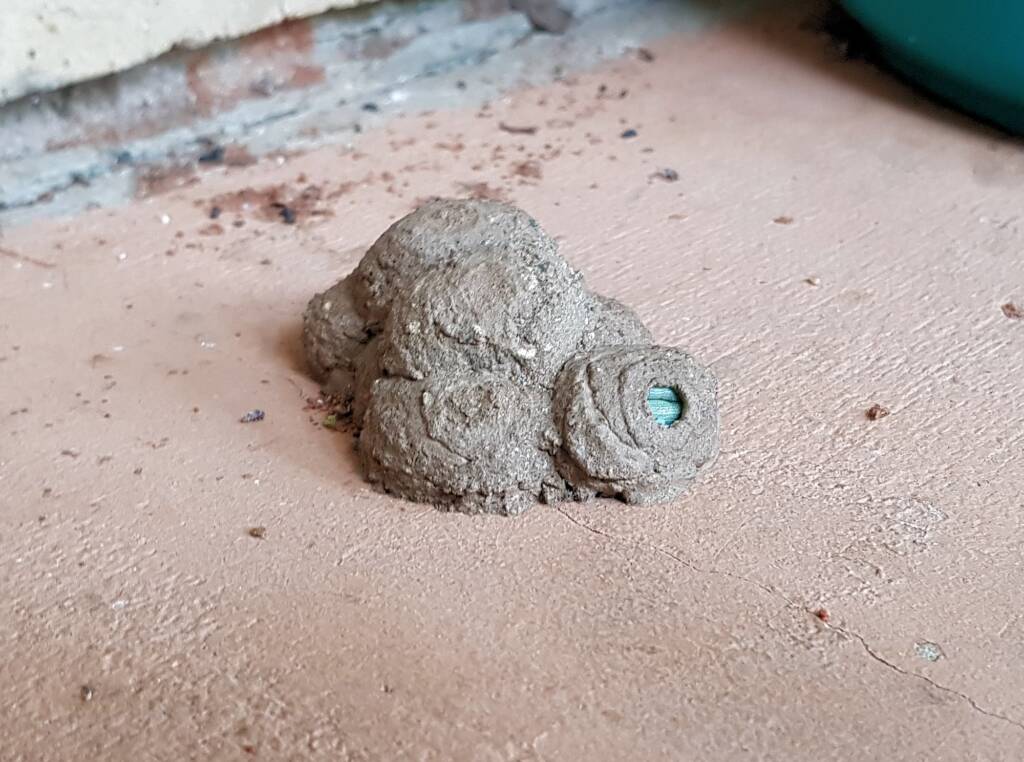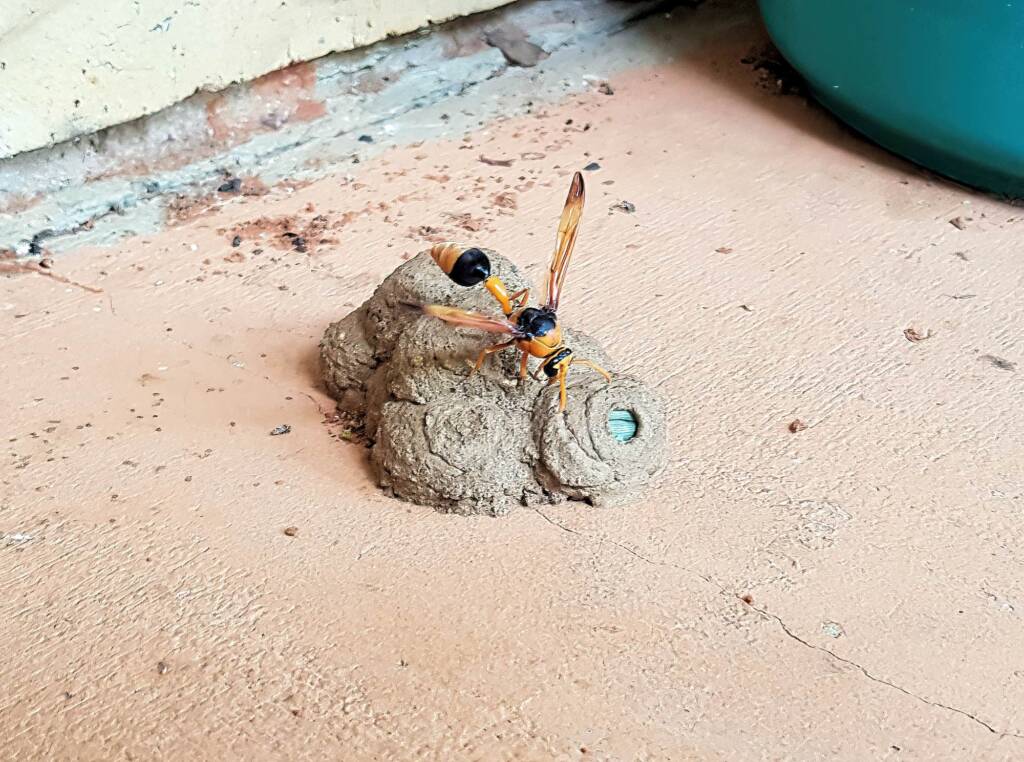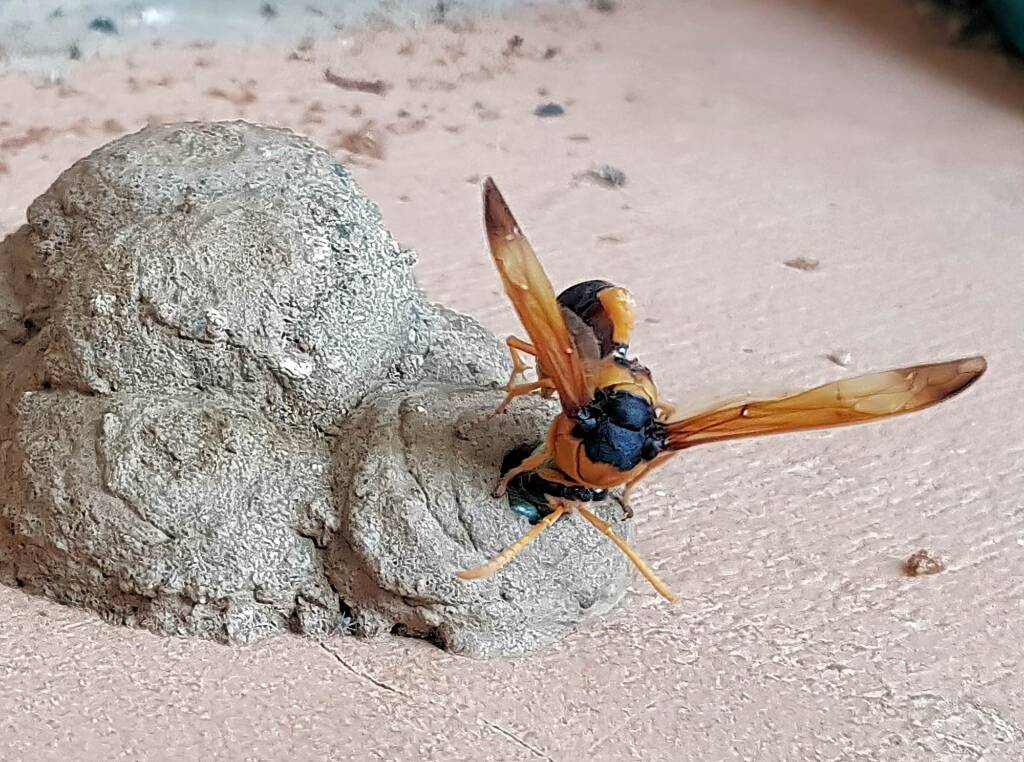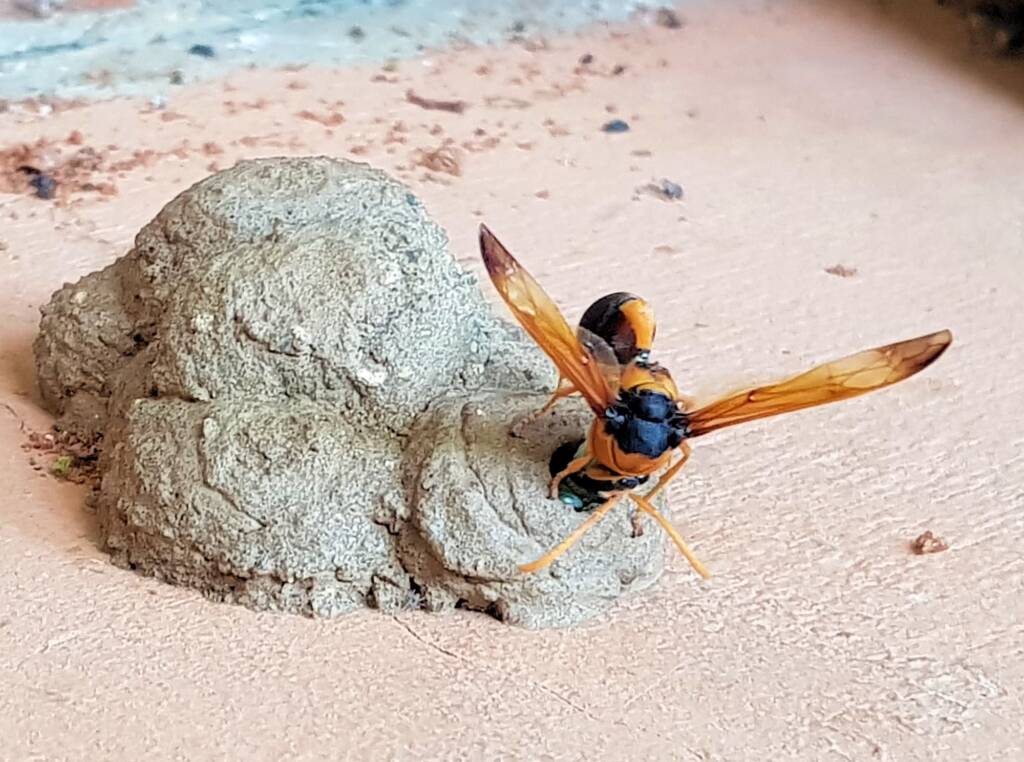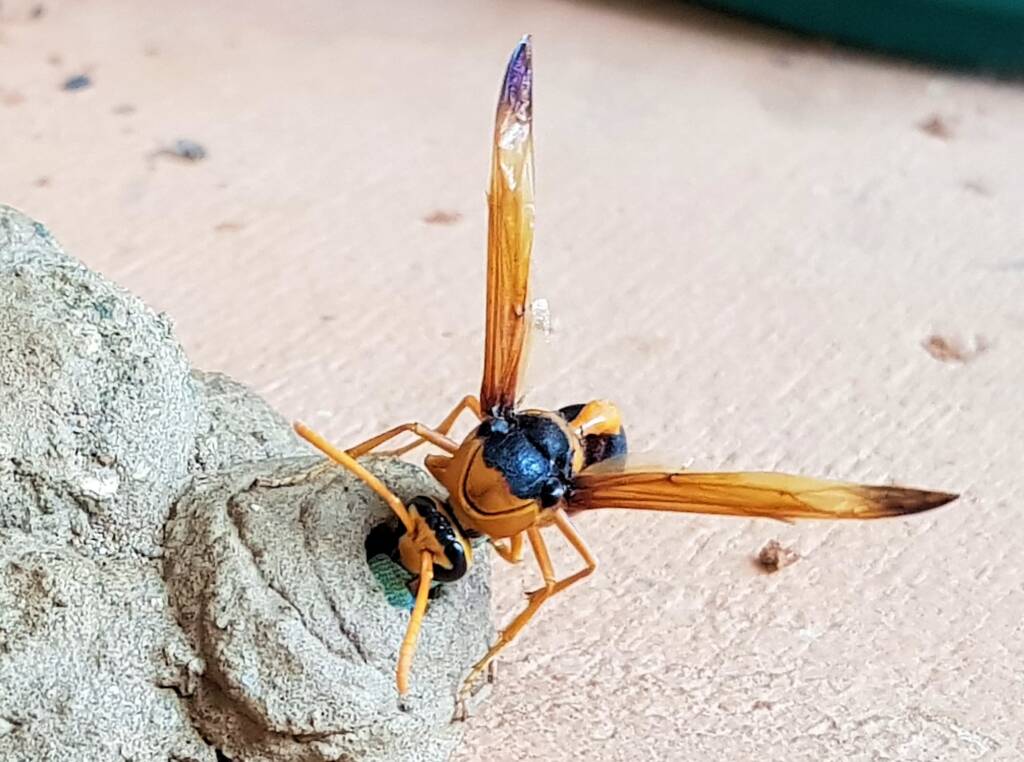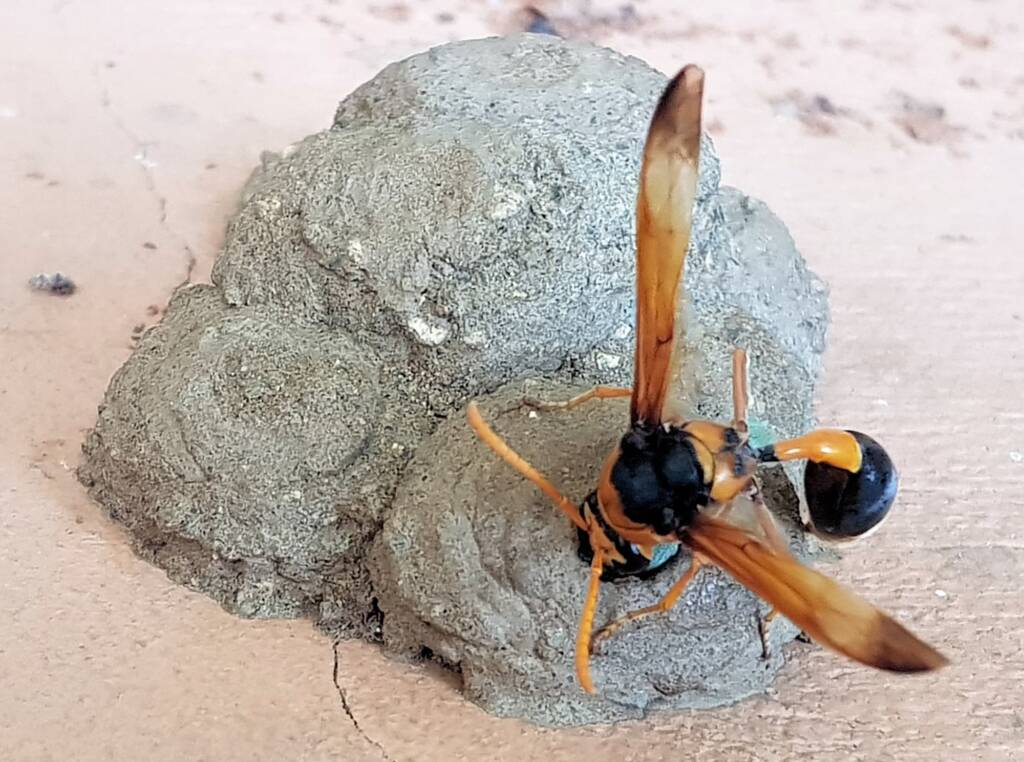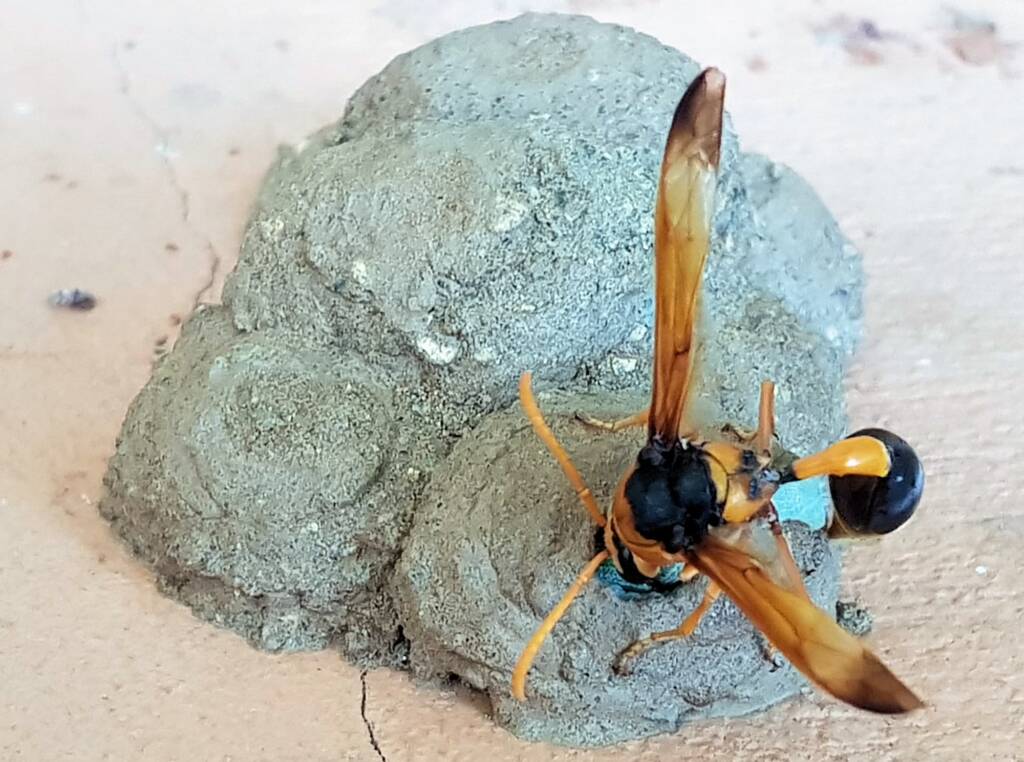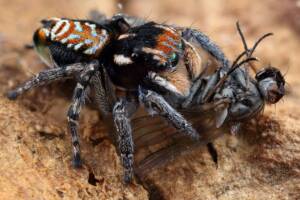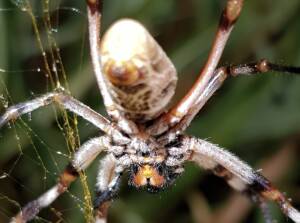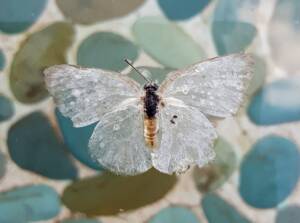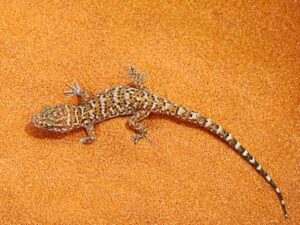WaspsWasps Index Australian Large Wasps Australian Mud Nest Wasps Mud Wasp Velvet Ants Abispa ephippium Acarozumia amaliae Aulacidae Australodynerus Bembix Bembicinae Bethylidae Blue Hairy Flower Wasp Braconidae Chrysididae Cryptocheilus / Heterodontonyx Delta latreillei (Potter Wasp) Delta philantes Eumeninae Euodynerus aspra Ferreola handschini (Orange-collared Spider Wasp) Flower Wasps Gasteruptiid Wasp Hairy Flower Wasps Isodontia (Grass-carrying Wasp) Lissopimpla excelsa (Orchid Dupe Wasp) Mutillidae Orange Wasps Paralastor sp. Pseudabispa bicolor ssp. nigrocinctoides Radumeris radula (Yellow Hairy Flower Wasp) Radumeris tasmaniensis (Yellow Hairy Flower Wasp) Rhynchium superbum Sceliphron formosum (Vase-cell Mud-dauber Wasp) Sceliphron laetum Sphex Thynnid Wasps Tiphiidae Torymus Yellow and Black Wasp
In Australia there are many species of wasps that build their nest out of mud. Most belong to the families Vespidae, Sphecidae and Pompilidae, with the greatest number of species belonging to the family Vespidae.
Many of these mud nest builders, are commonly called Mud Daubers or Potter Wasps. They are predatory wasps that build their nests from a mixture of mud/sand/clay and saliva (secretion). These are different to the other native wasps that are commonly known as paper wasp, building their nests out of chewed up plants or wood material mixed with saliva. Whilst the paper wasps are social species, mud wasps are usually solitary species.
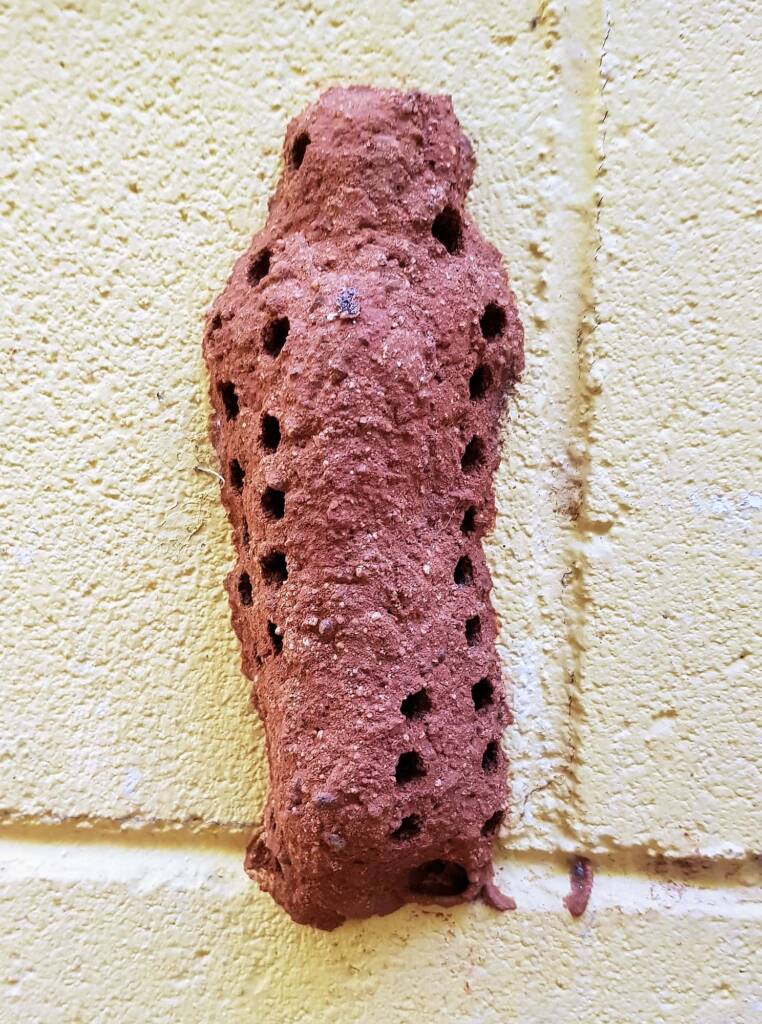
The mud nests of the mud daubers and potter wasps vary between species and size. The material that the nest is made from is usually dependent on what is available in the area at the time. The wasp also need access to water, from which they mix with the sand/mud/clay to create their nests.
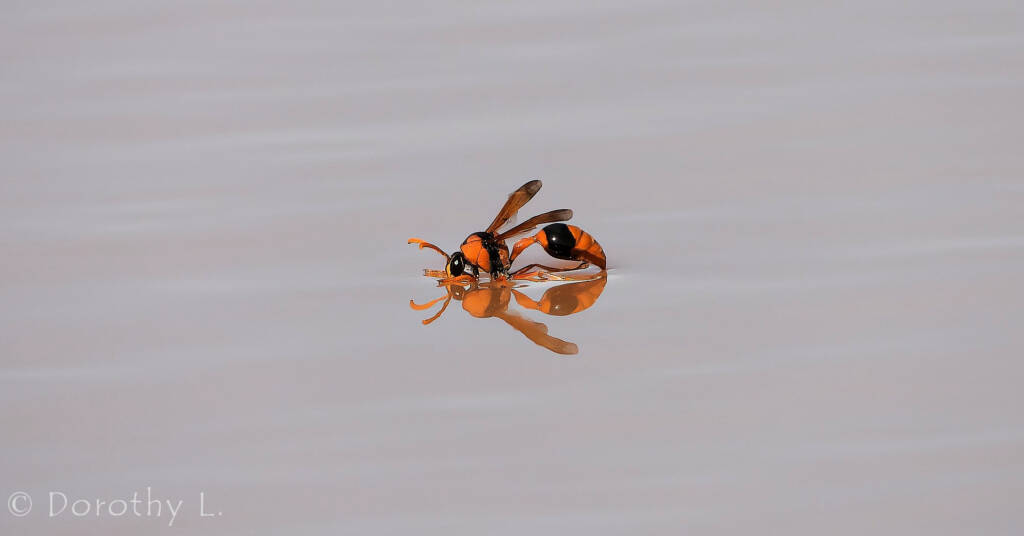
In the following image, you can see that the Potter Wasp has used different colour sands to plug the cells containing their eggs and food for the young. This mud nest had been visited over a number of seasons, building on top of the existing structure. The final size being that of a tennis ball.
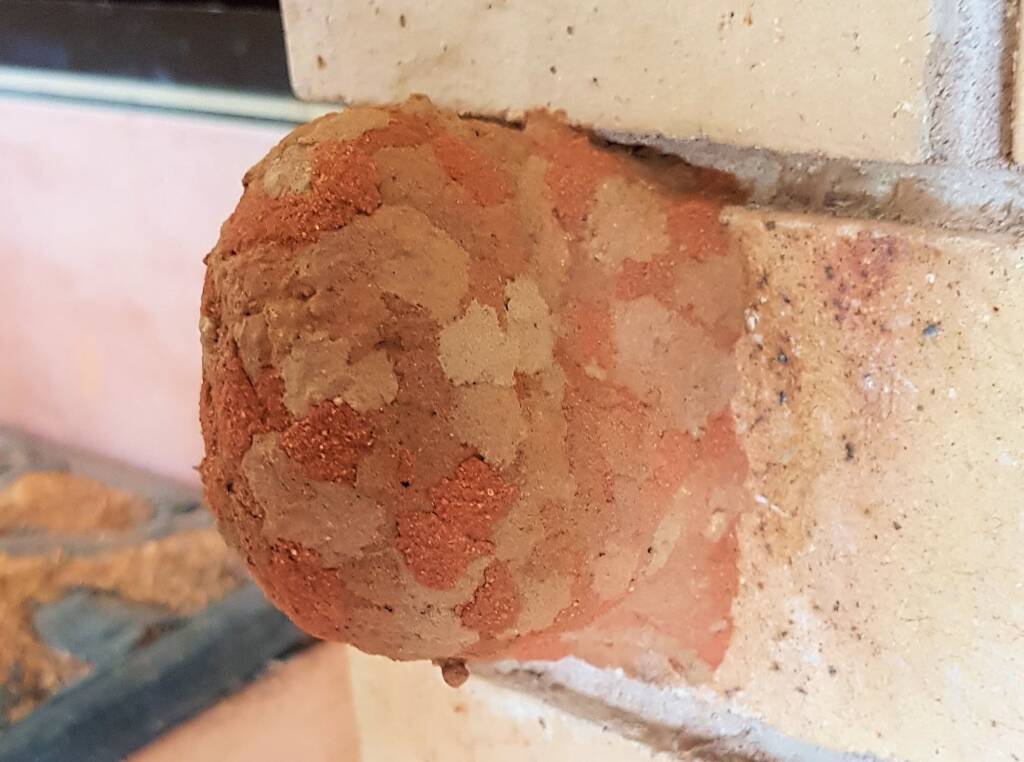
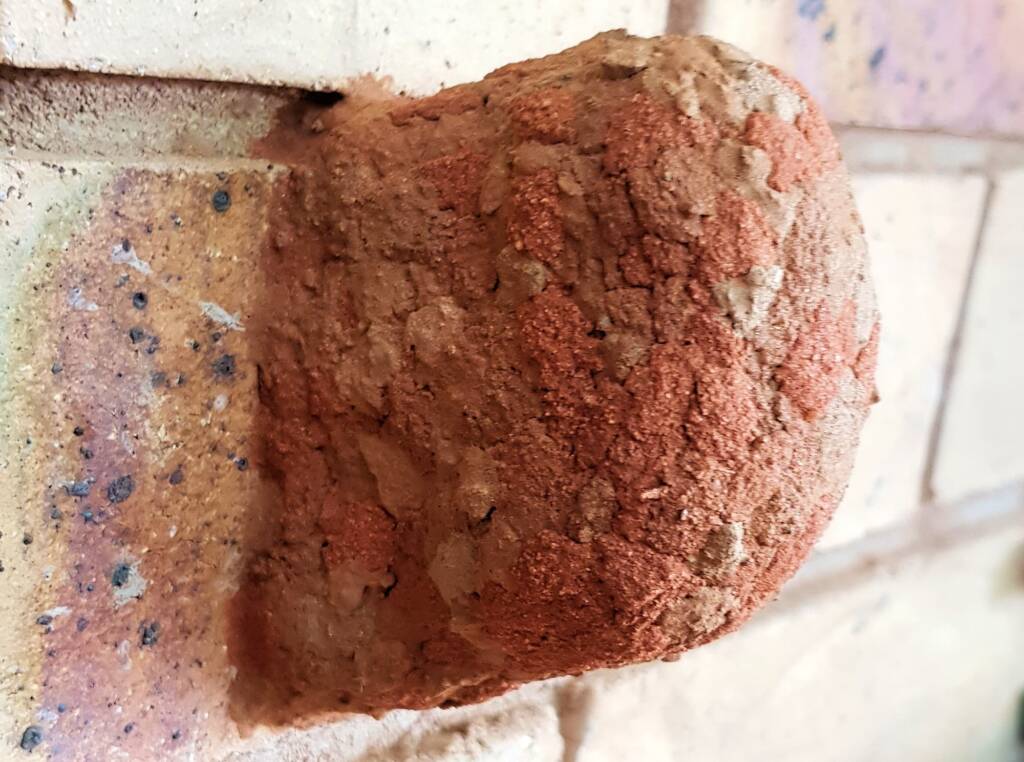
Whilst each mud wasp species uses a slightly different design and shape, this is not necessarily set in mud, as it has been documented that some individual species will build different shape mud nests.
In the following image you can see that the same species of Potter Wasp (Delta latreillei), built a different style of mud nest, using a different coloured sand. How did we know, because this was built at our front door of our home and we only witnessed the one species of Potter Wasp at that time.
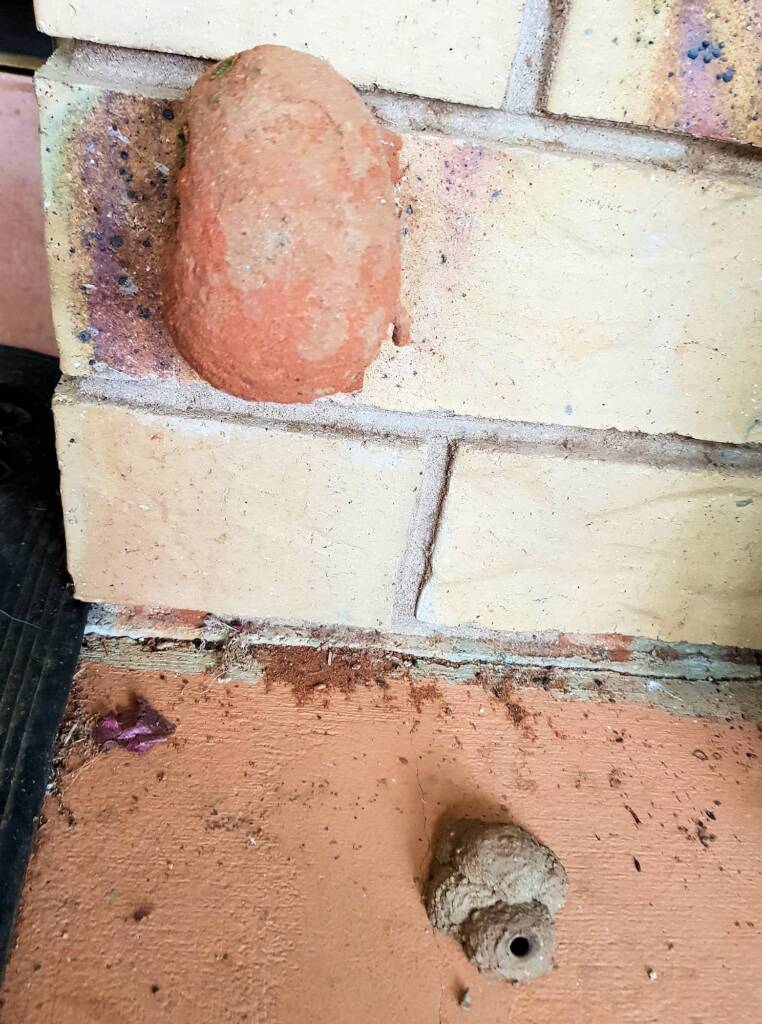
At the time, the mud nest mounted on the wall had been built and added to over a period of nearly two years. After which there was no further activity by the Potter Wasp(s). We then noticed other insects had started to taken residence in the mud nest, namely the Megachile aurifrons (Golden-browed Resin Bee).
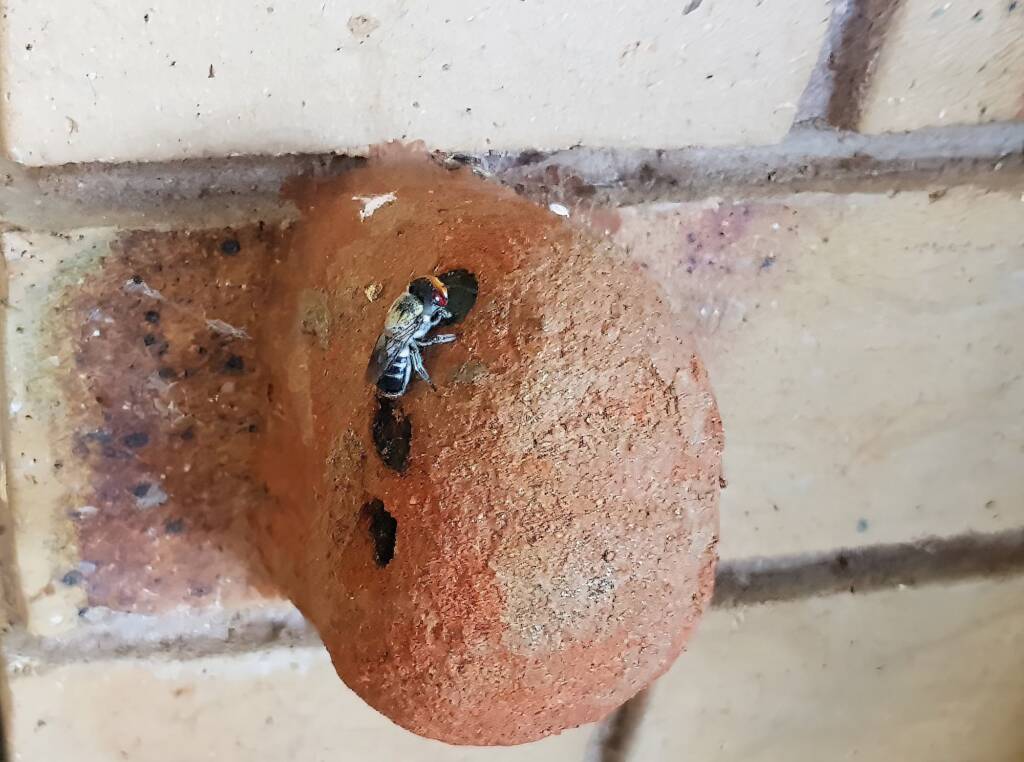
Soon after another mud nest was being constructed on the ground below the other mud nest. This was being built from a different type of sand. We of course naturally assumed it was a different species of Potter Wasp. So it was much to our surprise to see the same species of Potter Wasp (Delta latreillei) creating the cells of this mud nest and then filling it with caterpillars for its larvae.
As a side note to the above, where we report seeing the same Potter Wasp (Delta latreillei) build the mud nest mounted on the wall and added to over a period of nearly two years, one could assume that this was the same individual potter wasp.
Research by others have indicated that some species of potter wasps will build up to 25 nests in their life span of two to three months.6 Other research of another species have the average lifespan of 193 days under laboratory conditions.7 For us “citizen scientist” we can only report on what we witness. We had watched what appeared to be the same Potter Wasp (Delta latreillei) returning to the same mud nest over a two year period, if it is not the same potter wasp, the question is raised, is it a related sibling or another female potter wasp of the same species.
Now back to the mud nests. Just to show you the variety in mud constructions, the following mud nests in Alice Springs were all built by the Potter Wasp species Delta latreillei. Some against walls, window frames, behind concrete blocks, under tables and even just on the ground on concrete and tiles.
Mud nest have been built in a variety of locations and usually where the mud nest structure is protected from elements such as direct sun and rain. Once a nest is completed, the saliva mixed in with the mud, usually makes it resistant to rainfall. Often the location of the mud nest will influence the size and shape of the mud nest.
In the following photo of a mud nest made by the Potter Wasp (Delta latreillei), it is approximately 17 centimetres high. It was built against the shaded western wall of a house.
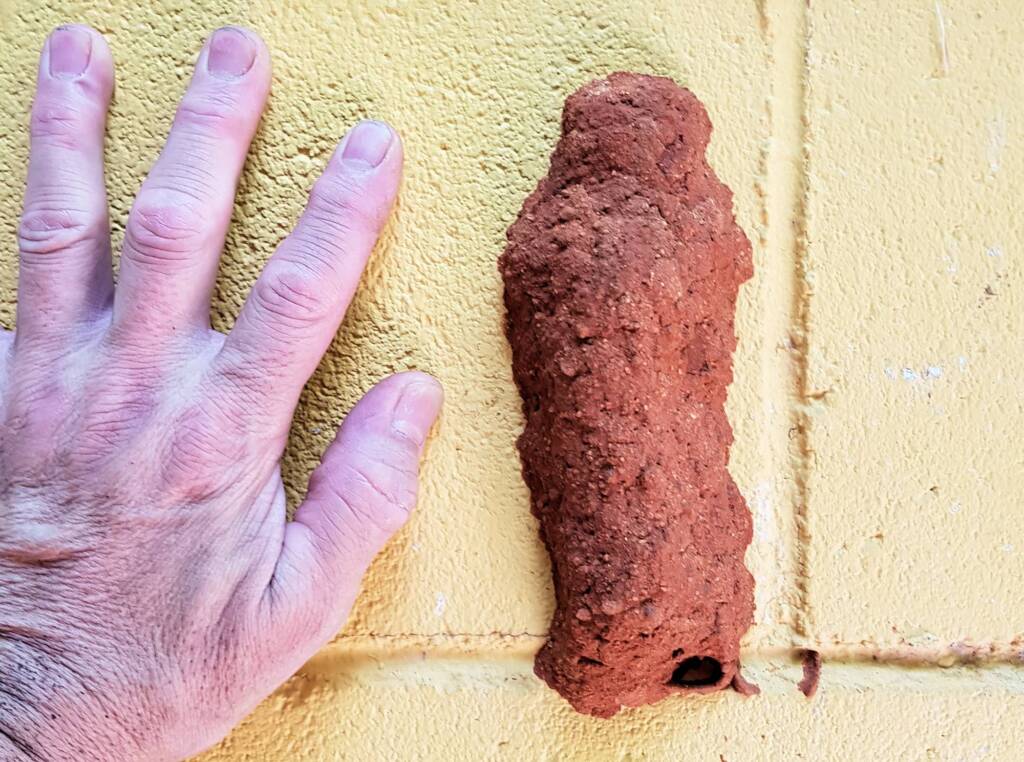
Just 3 metres further along the same shaded western facing wall was the following mud nest, built by another species of Potter Wasp (most likely Abispa sp). This nest built under a hot water system measured 47 centimetres in length.
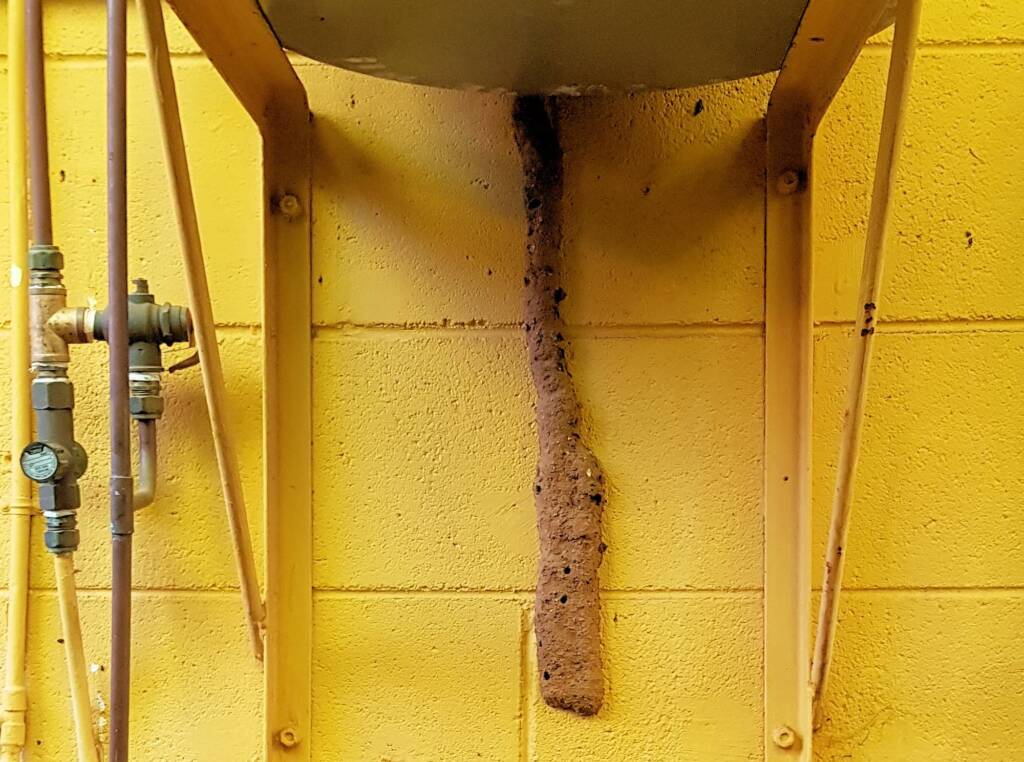
Interestingly both nests having been vacated by the mud wasps, and were now being occupied by the Golden-browed Resin Bee (Megachile aurifrons).
In the following image, the Potter Wasp (Delta latreillei) is stuffing a caterpillar into a vase shaped mud nest built against a sheltered rock face.
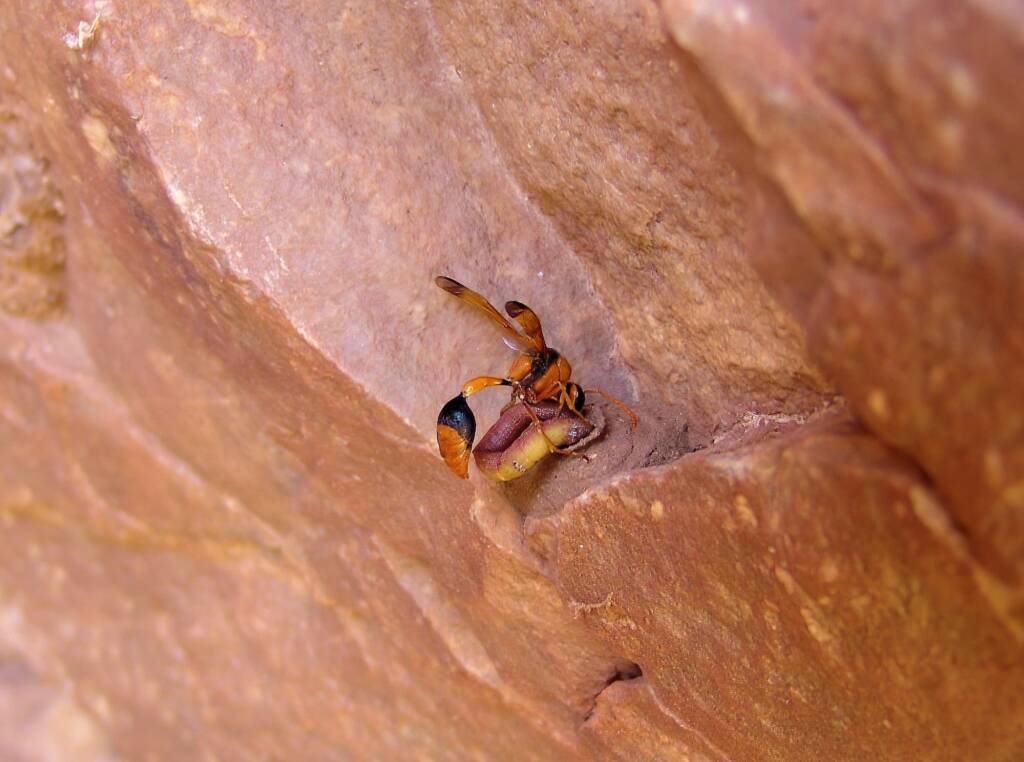
The following are examples of the vase/pot shaped mud nest created by a mud wasp. In a couple of the photos you can see it filled with caterpillars for the larvae.
Whilst some mud wasp may build only a single compartment, most species build a number of compartments placed together or on top of each other. They lay within each compartment a single egg and fill the rest of the compartment with food for the larva to feed on after it hatches from the egg.
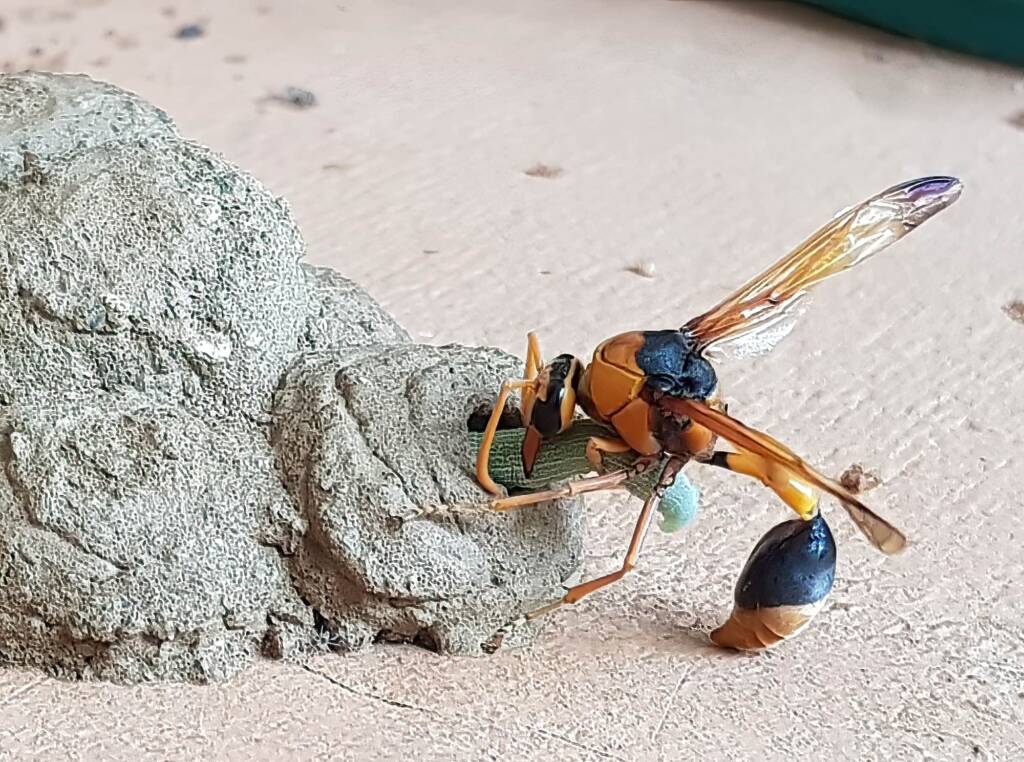
Mud Daubers are the species of wasps that usually fill the cells in their mud nest with paralysed spiders, as a food source for their larvae. Following is Sceliphron laetum who fill the mud cells with paralysed spiders.
The Potter Wasps fill their mud nest with paralysed caterpillars for their larvae. Although, common names being what they are, mud daubers and potter wasps are often used interchangeably by many people.
Following is a view of the external and internal empty mud nest of a Potter Wasp (approximately 7 cm long). The young wasps having left the nest.

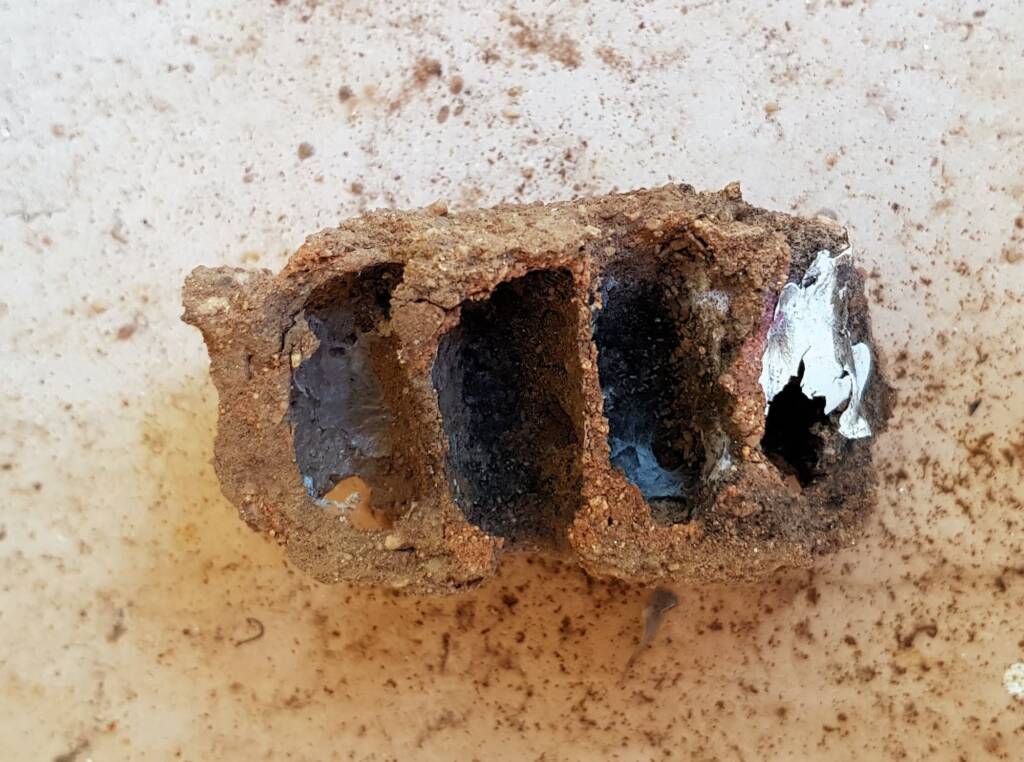
A view of another empty mud nest from the Mud Wasp (Delta latreillei).
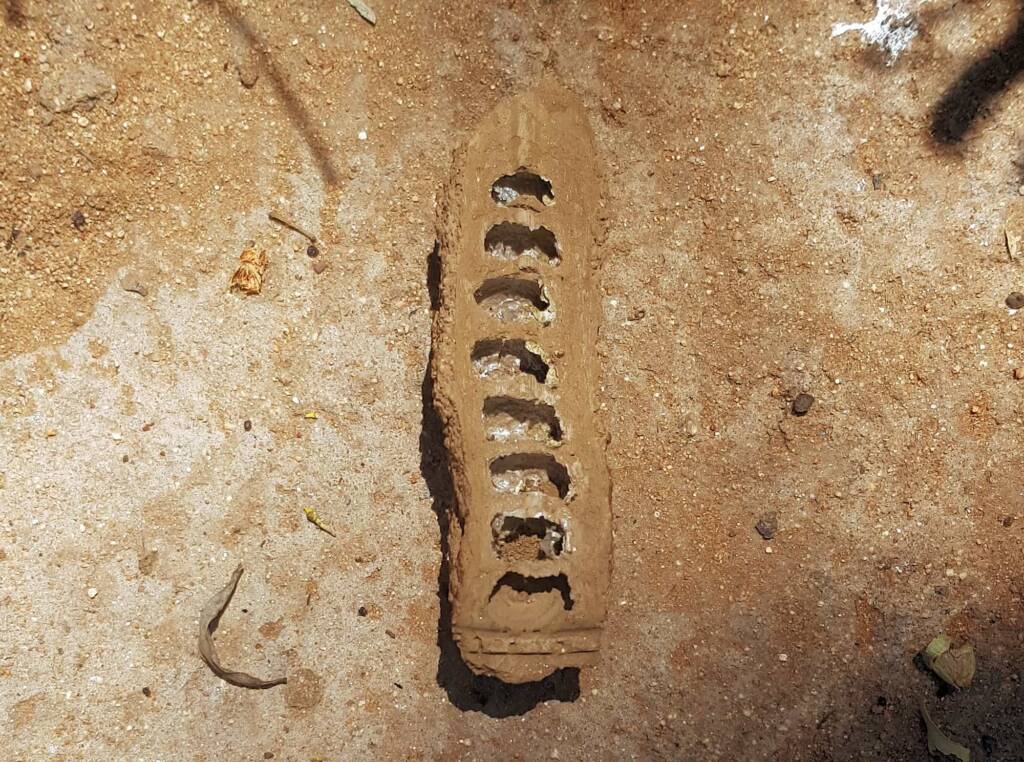
Check out our following series of photos of the mud nest of the Potter Wasp (Delta latreillei), as it stocks the cell with food for the larvae. As each cell is filled, the entrance is sealed and more mud is added to create another cell to the nest.
You can read more information on the mud nest and potter wasps here:
Also check out our blogs:
Footnote & References
- Mud Dauber and Potter wasps, Queensland Museum, https://www.qm.qld.gov.au/Explore/Find+out+about/Animals+of+Queensland/Insects/Wasps+and+bees/Common+species/Mud+Dauber+and+Potter+wasps
- Slender mud-dauber wasps: genus Sceliphron, Western Australian Museum, https://museum.wa.gov.au/research/collections/terrestrial-zoology/entomology-insect-collection/entomology-factsheets/sceliphron
- Wasp season brings native mud wasps into urban Hawkesbury to build nests, by Sarah Falson, 1 March 2019, Hawkesbury Gazette, https://www.hawkesburygazette.com.au/story/5912065/wasp-season-brings-native-mud-wasps-into-urban-hawkesbury/
- Subfamily Eumeninae – Potter Wasps and Mud Nesting Wasps, Brisbane Insects and Spiders, https://www.brisbaneinsects.com/brisbane_vespoidwasps/Eumeninae.htm
- Nesting Behavior of Abispa ephippium (Fabricius) (Hymenoptera: Vespidae: Eumeninae): Extended Parental Care in an Australian Mason Wasp, R. Matthews, J. Matthews, 15 November 2009, Psyche: A Journal of Entomology, Semantic Scholar, https://www.semanticscholar.org/paper/Nesting-Behavior-of-Abispa-ephippium-(Fabricius)-in-Matthews-Matthews/b7b29e548c8fdd8447485c4cff687bce03eafbe5
- Potter wasps, John Walters, https://johnwalters.co.uk/research/potter-wasps.php
- Southon RJ, Bell EF, Graystock P, Sumner S. Long live the wasp: adult longevity in captive colonies of the eusocial paper wasp Polistes canadensis (L.). PeerJ. 2015 Mar 24;3:e848. doi: 10.7717/peerj.848. PMID: 25825677; PMCID: PMC4375972, https://www.ncbi.nlm.nih.gov/pmc/articles/PMC4375972/
- Robert W. Matthews, Janice R. Matthews, “Nesting Behavior of Abispa ephippium (Fabricius) (Hymenoptera: Vespidae: Eumeninae): Extended Parental Care in an Australian Mason Wasp”, Psyche: A Journal of Entomology, vol. 2009, Article ID 851694, 15 pages, 2009. https://doi.org/10.1155/2009/851694
- A window into mud-nests, by Kerri-Lee Harris, 3 December 2021, Life In A Southern Forest, https://southernforestlife.net/happenings/2021/11/15/mud-nests
WaspsWasps Index Australian Large Wasps Australian Mud Nest Wasps Mud Wasp Velvet Ants Abispa ephippium Acarozumia amaliae Aulacidae Australodynerus Bembix Bembicinae Bethylidae Blue Hairy Flower Wasp Braconidae Chrysididae Cryptocheilus / Heterodontonyx Delta latreillei (Potter Wasp) Delta philantes Eumeninae Euodynerus aspra Ferreola handschini (Orange-collared Spider Wasp) Flower Wasps Gasteruptiid Wasp Hairy Flower Wasps Isodontia (Grass-carrying Wasp) Lissopimpla excelsa (Orchid Dupe Wasp) Mutillidae Orange Wasps Paralastor sp. Pseudabispa bicolor ssp. nigrocinctoides Radumeris radula (Yellow Hairy Flower Wasp) Radumeris tasmaniensis (Yellow Hairy Flower Wasp) Rhynchium superbum Sceliphron formosum (Vase-cell Mud-dauber Wasp) Sceliphron laetum Sphex Thynnid Wasps Tiphiidae Torymus Yellow and Black Wasp
InsectsInsects Index Insects Life Cycle… Bees Beetles Blattodea Butterflies Coleoptera Cicada Crabronidae Diptera Dragonflies & Damselflies Formicidae Hemiptera Heteroptera Mantodea Moths Neuroptera Orthoptera Orthopteroid Processionary Caterpillar Stink Bugs, Shield Bugs and Allies Wasps Water Scorpion (Laccotrephes tristis) Witchetty Grub


